









features
14 Rea sons To be Chee R f ul
Some unexpected theatre in the sky sparks a new passion in James Brown Entertainment
22 e laine paige: “i R e membe R”
Britain’s best-loved musical star on her 50 fascinating years in the business
28 my day as a dan C ing queen
Our writer sings with her idols at the ABBA Museum
Health
38
Tame you R bl ood
suga R fo R eve R
Just how much is your diet affecting how you feel?
44 11 h ou R s i n Roo m 407
Baby Austin was born at just 26 weeks. What happened next shocked everyone
Inspiration
64 be ing T he R e fo R bo
How a little girl and her family were helped by a community with a big heart

72 family pho T o
C ompeT i T ion
Take a look at the fantastic photos that won our votes
78 T he sTR ange R who C hang ed my life
When taxi driver Irving Stern picked up a fare one morning, he couldn’t have guessed what would happen next
Travel & Adventure
86 mag i C al me no RC a
We explore the history and beauty of this hidden Spanish gem
96 T he sinking of T he hms bounty
As a boat sails into Hurricane Sandy, a frantic mission to rescue its stricken crew begins
COver Ph O t O : re X/ CAN Nguye N 07•2014 | 1
july 2014 p 28
Contents

I’m takIng over the edItor’s re Ins from Catherine Haughney, who’s a hard act to follow given her contribution to the magazine over the years. But my first issue in charge couldn’t have been any more fun!
For a start, there’s our family photo competition. Choosing the winners was tough—there are clearly lots of talented snappers among our readers —but we’ve published the most heartwarming on p72. Then there’s Elaine Paige, the First Lady of British Musical Theatre, looking back on her star-studded career on p22. The sheer number of hit shows to her name— and the juicy anecdotes that go with them—boggle the mind.
Those looking for excitement, meanwhile, should turn to p96 for “The Sinking of the HMS Bounty ”, while the cooks among you will enjoy the recipe on p112 and the related tips, courtesy of our new food-anddrink expert Rachel Smith.
In short, I hope you enjoy reading the magazine as much as I’ve enjoyed working on it!
 Tom Browne
Tom Browne
theeditor@readersdigest.co.uk
pinterest.com/rdigest Reader’s
facebook.com/readersdigestuk
twitter.com/rdigest
| 07•2014 2 IN EVERY ISSUE 4 See the World Diff erently 12 Ove r to You Entertainment 19 What’s On in July Health 54 Dr Max Pemberton 5 8 Susannah Hickling Inspiration 76 If I Ruled the World: E sther Rantzen Travel & Adventure 104 Kate Pettifer Money 108 Jasmine Birtles Food & Drink 112 30-Minute Recipe 114 Tips: Rachel Smith Home & DIY 118 Gardening 120 Gadgets: Olly Mann Books 122 July Fiction—James Walton’s recommended reads of the month 127 Bo oks That Changed My Life: Tony Parsons Fun & Games 128 You Couldn’t Make It Up 131 Wo rd Power 134 Brain Teasers 140 La ugh! 144 Beat the Cartoonist E d I to R ’ S l E tt ER
Digest is published in 17 languages around the world

A weekend to savour



Jersey bursts with places to enjoy a superb meal or a perfect pint. Michelin-starred places, where the oysters are so fresh, you can still taste the sea. Coastal places, where gastropubs and trendy cafés serve crab sandwiches so full, you’ll need the miles of breathtaking beaches to walk them o ! Country places deep in the island’s lush interior, where cosy inns serving fresh-from-the-field produce are tucked away. And stylish places where, a er a day exploring, you can simply relax and enjoy a soothing spa treatment. Add a mild climate, easy travel by air or sea from the UK and great-value o ers, and you’ve discovered Jersey.
jersey.com








*Return price per person, including taxes, with easyJet from Gatwick. Price correct at time of print
Flights £ from 48rtn

4

5
the world
the
John Michael Fay/ n ational Geo G raphic Stock
see
turn
page
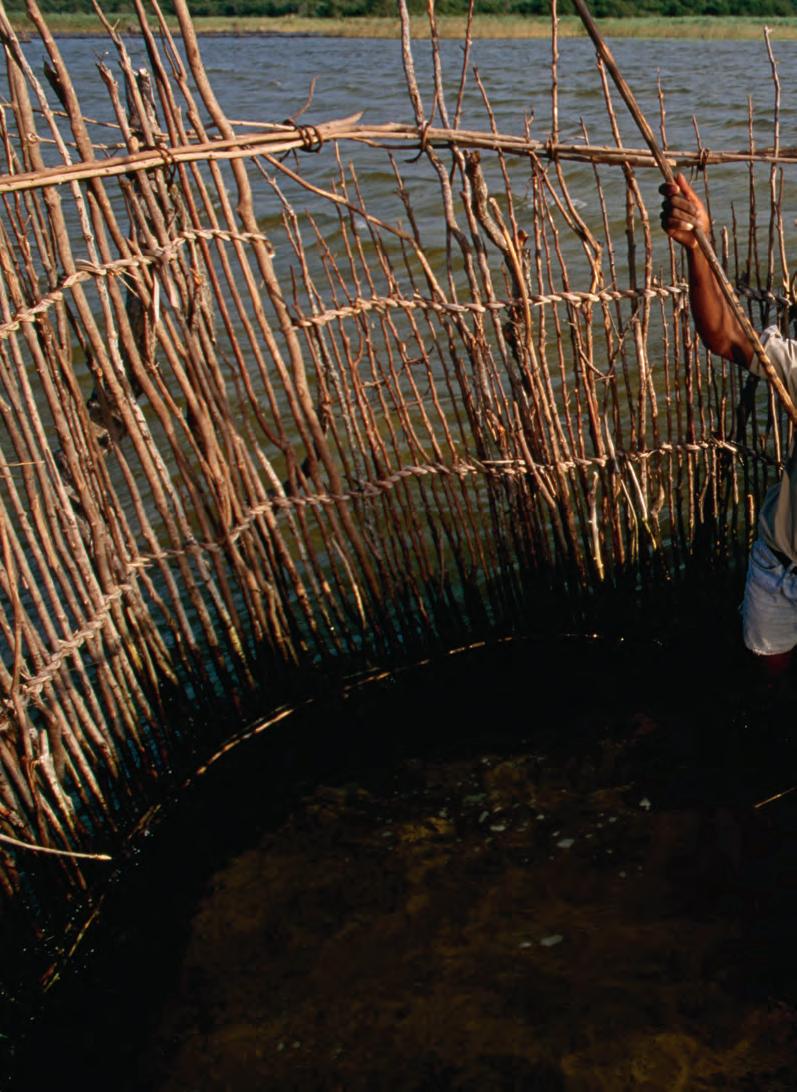
From high above, these fish traps in Kosi Bay, South Africa, form a mysteriously lovely pattern on water rich with algae. Generations of fishermen have worked in the bay— really a series of four interlinking lakes surrounded by a nature preserve. The area is known for biodiversity: in addition to abundant spotted grunter, rock salmon and bream, it’s home to 250 species of birds, plus crocodiles and hippos. Happily, trap fishing is both successful and sustainable. ...differently
6
c hri S John S / n ational Geo G raphic Stock

7
Write to Us
send us your stories, jokes and letters
We Pay...
£50 for the star letter and £30 for regular letters.
Email readersletters@ readersdigest.co.uk or go to readersdigest.co.uk/ contact-us

...and we pay
£50 for the true stories, anecdotes, jokes in Laugh! and You Couldn’t Make It Up…, and contributions to end-ofarticle fillers, Travel and Gardening Email excerpts@ readersdigest.co.uk or go to readersdigest.co.uk/contact-us
subscribe

* s ee p10 for details of call rates
Visit readersdigest.co.uk or write to: reader’s digest, Po Box 7853, ringwood BH24 9FH. UK: £45.48 a year. Republic of Ireland: €61.20 a year. Prices include delivery. For Gift subscriptions contact Customer services below
Customer Services
Contact Customer Services for renewals, gifts, address changes, payments, account information and all other enquiries.
Phone: 0330 333 2220* email: customer_service@ readersdigest.co.uk
Sorry!
We cannot acknowledge or return unpublished items or unsolicited article-length manuscripts. do not send saes. article-length stories, poetry and cartoons are not requested.

twitter.com/rdigest

Talking Magazines
reader’s digest is available in a talking edition for blind and partially sighted people for £16. For details, phone: 01435 866 102; email: info@ tnauk.org.uk, website: tnauk.org.uk.
Small Print
ensure submissions are not previously published. include your name, email, address and daytime phone number with all correspondence. We may edit letters and use them in all print and electronic media. Contributions used become world copyright of Vivat direct ltd (t/a reader’s digest).

facebook.com/readersdigestuk pinterest.com/rdigest
| 07•2014 8

Have you seen our invisible hearing aid yet? No?








Our fantastic invisible hearing aid is small. Really small. And, because it fits slightly deeper in the ear canal than your average hearing aid, it’s virtually invisible when worn. That means you get all the benefits of hearing better without anyone understanding how you do it.
Whilst it can’t be seen the difference can be heard.
Just because this hearing aid is small doesn’t mean it’s less effective. We’ve made sure this tiny device has the high speed processors and clarity enhancing features of the very latest hearing aids. These are the things that make sure you get to enjoy all the great things life has to offer like conversations with friends and family, an evening out in your favourite restaurant or a cosy night in front of the TV. And you can enjoy all this with the confidence that whilst people might notice the difference in your hearing they definitely won’t notice your hearing aid.
If you like what you (don’t) see, call 0845 203 7662 and book a free appointment in store to find out more about this amazing little hearing aid.
“I hear normally, it’s as if I don’t have a loss and, because you can’t see them, no one else knows I do!”

Free hearing check
To book your hearing check simply call 0845 203 7662
Terms: Only one hearing check per year. Free hearing check for over 18s only. Subject to availability and eligibility. By appointment only. Call 0845 203 7662 (local rate, calls may be recorded for training purposes) between 8.30am and 6.00pm (Mon-Thurs), or 8.30am and 5.30pm (Fri) and 9.00am and 5.30pm (Sat).

For more information please visit Bootshearingcare.com
Not at all? Exactly.
@readersdigest.co.uk
it’s All chAnge online! We’re really excited to be relaunching our website later this month. With a brand new look and fresh articles, you’ll never be far away from some great Reader’s Digest content. We’ve also introduced seven sections: Entertainment; Books; Hearing & Vision; Personal Care; Fashion & Jewellery; Travel & Adventure; and Inspiration & Innovation. All of them are packed full of real-life stories and advice, as well as fascinating images, videos and plenty of laughs!

Alongside our new site, we’ll also be introducing some great products to the Reader’s Digest shop—keep your eyes peeled!




*Calls to 03 numbers cost no more than a national rate call to an 01 or 02 number and will be free if you have inclusive minutes from any type of line including mobile, b t or other fix ed line

| 07•2014 10
pinterest.com/rdigest twitter.com/rdigest © 2014 Vivat Direct Ltd (t/a Reader’s Digest). British Reader’s Digest is published by Vivat Direct Ltd, 57 Margaret Street, London W1W 8SJ. All rights reserved throughout the world. Reproduction in any manner, in whole or part, in English or other languages, is prohibited. Reader’s Digest is a trademark owned and under license from The Reader’s Digest Association, Inc, and is registered with the United States Patent and Trademark Office. All rights reserved. Classified advertising by Madison Bell. Printed by Polestar Chantry, Polestar UK Print Ltd. Newstrade distribution by Seymour Distribution Limited. PAPER fROM SUSTAINABLE fORESTS. PLEASE RECyCLE
facebook.com/readersdigestuk
Visit Our Website! CEO gARy h OPKINS ED ITORIAL Editor-in-Chief TOM BROWNE Sub-Editor LAURA DEAN-OSg OO D Digital Content Editor M AN DI g O ODIER Ar t Director y VE y BAILE y g rap hic Designer KATIE JO h NSON ADVERTISING Advertising Director S IMON f ULTON simon.fulton@readersdigest.co.uk 0203 701 5936 Account Director PEVIN PATEL pevin.patel@readersdigest.co.uk 0203 701 5935 MARKETING Operations Director JU LIE LEAC h Commercial Director STEVE KIN CAID Th E R EA DER ’ S D IG EST A SS OCIATION I NC (USA) Chairman of the Board RO BERT E g UT h President and Chief Executive Officer B ON NIE K IN T zER Vice President, Chief Operating Officer, International BRIAN KENNEDy Editor-in-Chief, International Magazines RAIMO MOySA customer services 0330 333 2220*








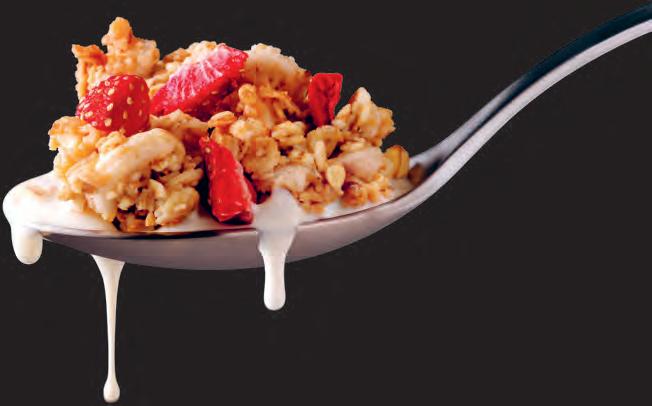
Over to You
✯ letter of the month...

Thank you for the article “New Hope for Alcoholics”. Having grown up with an alcoholic parent and experiencing the very limited help available during the 1970s, I’m encouraged to read that my experience as a child may not be what a child would experience today. Very few people recognised alcoholism as an illness then—it was a lonely path, and when a crisis point came the only option was to be placed into an asylum (if there was a bed). AA had its place, but an addict would just stop going if he wanted to carry on drinking.
Alcohol abuse causes so much unhappiness for all the family, often behind closed doors. I’m encouraged that there are people committed to changing things. Edwina cussEn, Hampshire
breaking the taboo
It was great that you covered the topic of alcoholism in the May issue. My youngest brother has been an AA member for over 12 years now, while I’ve been a member of AlAnon—supporting those whose lives have been affected by someone else’s drinking—for almost ten years.
These programmes have changed our lives for the better; not only my brother’s and my own, but the whole family’s. Well done for featuring a serious subject that we all must learn to recognise for what it is: an emotional disease, not a taboo or embarrassing subject. L
LopEz, Yorkshire
| 07•2014 12 75 may 2014 readersdigest.co.uk From the start, Olivier Ameisen was an anxious child. Even simple things, like being given his own railway ticket to hold, caused him to worry until it was safely in the conductor’s hands. Anxiety became a part of his life as he grew up, entered medical school and, in 1983, at the age of 30, moved from his native France to New York. Although he became a successful cardiologist, he often felt like a bundle of raw nerves, New drugs are the latest weapon in the fight against this devastating disease By erin king New Hope for Alcoholics llustrated y gary neill ► BR140501 Copy.indd 74-75 27/05/2014 16:43
le TT ers o N TH e MAY I ssue
questioning the eu
Roger Boyes’s informative article on the EU (“Vote to Save Europe”) made me doubt my previous support.
Do we really want our everyday lives to be at the bidding of the 28 unelected technocrats currently based in Brussels? My gut feeling is that cooperation between the states is a good thing. But after so many wrong turns, is it still right for the UK? We’re a democratic country, tolerant in most respects, but we’re also fiercely independent, and don’t like being told how to live our lives.
I’m no longer sure that our best interests are served by belonging to this gargantuan bureaucracy .
GiLLian kEEnan, Hertfordshire
an end to the quiet life
I was upset to read Max Pemberton’s experience of the treatment of an elderly lady in a hospital ward. All too often, a “quiet life” is chosen regarding care for the elderly. But would you still choose this if it was your own mother?
We need people to stand up and speak for the elderly in a way that can change the attitudes that are prominent today. Then there really would be a quiet life—but one of peace for the elderly, and one where,
when they felt distressed or anxious, elderly patients would be treated with respect and dignity, and not “knocked out flat” so that others can have a “quiet life”.
c cuLLEn, Brighton
a fresh outlook
James Brown struck a chord of agreement with “Reasons to Be Cheerful”, looking at life afresh in your local surroundings. I’ve been doing this recently after living for 30 years in the same part of the country. It’s opened up a whole new world of appreciation for where I live, which has given me a better understanding of the local history and led to a greater sense of belonging to the local community.
Garry bohnE, West Lothian
success from failure
“Good Idea, Too Bad It Didn’t Work” made me smile. Lots of people have had a good idea that’s become a success, but probably even more have had failures.
As Winston Churchill once said: “Success consists of going from failure to failure without loss of enthusiasm.” And without my failures, I wouldn’t be where I am today.
rick wiLLiams, Denbighshire
send letters to readersletters@readersdigest.co.uk
We pay £50 for letter of the Month and £30 for every other published letter
07•2014 | 13
in all
Please include your full name, address, email and daytime phone number. We may edit letters and use them
print and electronic media.
wE want to hEar From you!
reasons to be cheerful
The sky’s a gift that keeps on giving, as James Brown finds love under some spectacular flight paths
Look Up: You Might Catch A Good Show

James, founder of Loaded magazine, now edits Sabotage Times—an online magazine with the motto: “We can’t concentrate, why should you?”
This column is all abou T The Vulcan b ombe r, the Lancaster, the Red Arrows, the Spitfire, the Hurricane and the Stunt Pilot. About how the best entertainment is in the air and free.
I cannot pussyfoot or mosey into this subject. Last summer, I found myself again and again under the flight paths of a variety of amazing aerial displays—and I have to confess they were nothing short of stunning. I’m not a plane spotter. I’ve a friend who’s hooked on flight and is already lined up to make that first Virgin Galactic journey into space, and at times his enthusiasm for wings has rubbed off on me. But beyond that? It’s all old war films for me.
I must admit that, until recently, I would have filed the Red Arrows away with lifeboat exercise days and stunt drivers in fields roaring through wheels of fire, and other such extravagant seaside entertainment. But then I found myself on a friend’s boat in Falmouth, ready to watch the Red Arrows —and what followed left me breathless. A meticulously timed and executed array of moves that boomed in and out of our vision, marked its trail with brightly coloured smoke and left us squinting into the distance, ears pricked ready for another
| 07•2014 14
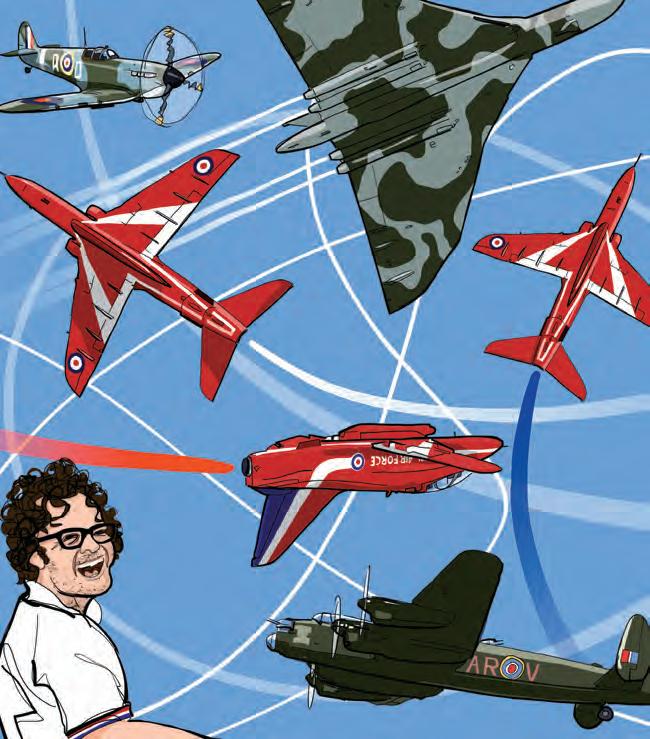
swooping interjection of powerful delight and nervy speed. When two jets come tearing in at each other, only to dip their wings and roll belly to belly, apparently inches apart, you know they’re not going to crash. But this isn’t faked WWF wrestling; it isn’t
squeezing your car through trafficcalming bollards. If they do catch each other? Kaboom! Game over. The speed, the sound, the daring and the enormity of the performance—rolling out using the whole of the sky around us—was just heart-winning.
illus T ra T ed b y N i CK Oliver 07•2014 | 15
noT long af Te r waTching The re d arrows, I was sitting by the beach when I heard what sounded like a busy road in the air. I walked up onto the sea wall and watched a Lancaster Bomber move effortlessly across the bay, no more than 100 yards above the surf. I was under true Battle of Britain skies—the local fields are scattered with small runways and old RAF huts, and I could feel the history flying by. How many other planes had escaped back across the Channel and come in at such height looking for a friendly field to land and refuel in?
round before us. It made me wonder why, with so much love and nostalgia for the two, someone doesn’t start building them again.
None of the exclusion zones bothered the Vulcan. Who was going to tell it to move on?
Not me
My in-laws, Alan and Terri, live in Biggin Hill, London, home of the famous aerodrome. I was standing in their back garden one fairly grey day when a Spitfire flew over. I was shocked. I imagine nature lovers feel the same when a rare beast appears unexpectedly. I went out through to the front of the house and watched a Spitfire and a Hurricane spend what seemed like an hour of mutual admiration—banking, rolling, executing fighting turns. As we headed home, I couldn’t help but pull the car over alongside the airport, nestle in behind three other mesmerised drivers, and watch as the planes came into land and taxi
i almosT didn’T see The sT un T PiloT. Back on the beach on a hot weekday, I leaned back on the pebbles and caught the tiniest needle of light reflecting up on high. It disappeared and then reappeared a second later, and as I adjusted my eyes to the distance I slowly began to trace its movement of startling gravitychallenging dips and twists. There was someone up there having the time of their life—the plane was too high to capture an audience, and it never came low enough to advertise the passion involved. It seemed like the most amazing luxurious freedom: something dangerously exhilarating, utterly self-occupying, but also a fantastic spectacle for anyone lucky enough to catch a glimpse.
The final deligh T came from The Vulc an. There was a running commentary on Twitter about where they were flying and when they’d hit your area. As a kid living just outside Leeds, I remembered seeing Vulcans at the top of the sky. Even up there, they seemed so huge.
| 07•2014 16 r eas ON s TO be C heerful
My son and I raced onto our roof to see the Vulcan making a tight turn over the bay right in front of us. We were speechless. It sent shockwaves through the wood behind us and roared on towards the town on the hill behind. When it was a mile away, all the birds flew back out of the woods and repopulated the skies. “It’s like the Millennium Falcon,” said my son, and he was right. It was huge, immense, like something from
another world. It left us breathless in delight as it cruised around the town, out to the lighthouse stations, the power station, the wind farm and the army base—all places with their own land and sea restrictions. None of the exclusion zones bothered the Vulcan, King of the Sky. Who was going to tell it to move on? Not me. I was bitten and smitten. A summer of great rare sights in the sky. The proof is out there.
budding authors, take a bow!
This inspired tale was one of thousands submitted to our 100-Word-Story Competition. We’ll be publishing a commended story every month.
revenge
ian Cameron frowned as he drove along the foggy mountain road. sylvia, his sat nav, wasn’t her usual lovely self today. her voice was cold and distant—there was none of the usual banter between them. Could she have found out that he was replacing her tomorrow with a more suitable model?
sylvia’s metallic voice rang out. “at the next junction, turn left.”
ian obeyed, straining to see through the thick fog. The car crashed through a wire fence and, as it plunged into the abyss, he heard sylvia’s triumphant voice. “if i can’t have you, no one else will!”
Graham Perry, Chester

Graham says: “I got the idea after reading various newspaper stories about sat navs sending drivers to cliff edges, the wrong way down one-way streets and, in one instance, into a churchyard! I’ve been writing short stories for many years, but this is the first time I’ve entered one for a writing competition.” Graham will receive a cheque for £50
07•2014 | 17 r eader’s d iges t












ONTHEBUTTERSHELF NEW
A delicious blend with BUTTER and OLIVE OIL*
*Also contains vegetable oils.
What’s On in July
In Cinemas
Big BUDget: DAWN OF THE PLANET OF THE APES This sequel to 2011’s Rise of the Planet of the Apes finds the ape leader Caesar with his empire under threat. Having seemingly been stomped out, surviving humans appear to reclaim their territory. A short-lived peace gives way to a war that will determine who will reign supreme and become the Earth’s dominant species. But, as previous movies in the Planet of the Apes franchise have taught us, expect the unexpected…
AniMAtion: HOW TO TRAIN
YOUR DRAGON 2 The loveable Hiccup and Toothless from the wonderful Cressida Cowell book series embark on the next chapter of their lives. The inseparable twosome discover an ice cave full of adorable wild dragons and a mysterious dragon rider. Between them, they must take on evil in order to stand up for what they believe in.


CoMeDy: TAMMY

King of the swingers: Andy Serkis as Caesar

Anti-heroine Tammy (Melissa McCarthy) is down on her luck and plans her big escape, thus triggering a series of quirky misadventures alongside her alcoholic grandmother Pearl (Susan Sarandon). Look out for an hilarious robbery scene as Tammy, face obscured by an upturned fast-food bag, sets out to rob her former place of work to make Pearl’s bail.
enteRtAinMent the press assoCiation 07•2014 | | 19

DRAMA: BoyhooD Filmed over 12 years using the same actors, Boyhood follows the story of Mason from the age of five to 18. Although its realistic conversation and outstanding performances might have you fooled, it isn’t to be mistaken for a documentary. A heartwarming, groundbreaking future classic, not to be missed.
TV Highlights
It’s festival season, so look out for the BBC Proms and tons of redbutton features.
On Your Radar
Our Pick of the DVDs
UnDeR the SKin
This modern gothic horror is sure to leave you stunned by its cinematic achievement and its seductive plot.


the Lego Movie
As hilarious as it is creative, with a plot that exceeds its seemingly gimmicky animation. Emmet, an ordinary Lego figure deemed an “Extraordinary Person”, must do all he can to stop the evil tyrant Lord Business.
gRAnD BUDAPeSt
hoteL This starstudded, typically stylistic Wes Anderson film oozes visual appeal, quirky characters and intriguing adventures.
John Ward, musician
Watching: NCIS (5 USA)
I’m not usually a fan of US cop shows, but I started watching this because David McCallum is in it—and now I’m hooked.

Reading: His Dark Materials by Philip Pullman As a former Sunday school teacher, I find the religious connotations intriguing.
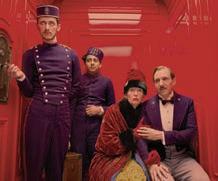
Online: Facebook I’m a bit of an internet-phobe, but I use this to stay in touch with friends.
listening: Live in New York by Bruce Springsteen
I love this album, especially “Out on the Street”. As a songwriter, I’m also thrilled to see people enjoying my own songs when I’m on stage.
What’s on in july | 07•2014 20 i FC F il Ms / the press asso C iation
Every year thousands of people put their faith and trust in Cats Protection when looking for a new addition to the family.
Behind each volunteer and member of staff is a wealth of experience and expertise which means when you adopt one of our cats, you can feel safe in the knowledge that he has been given the best possible care.
When he leaves Cats Protection, your cat will have been treated to a top-to-tail medical.
This means he will have been:
• Fully examined by a veterinary surgeon
• Vaccinated at least once against flu and enteritis
• Treated against fleas, roundworm and tapeworm
• Neutered if old enough
• Microchipped
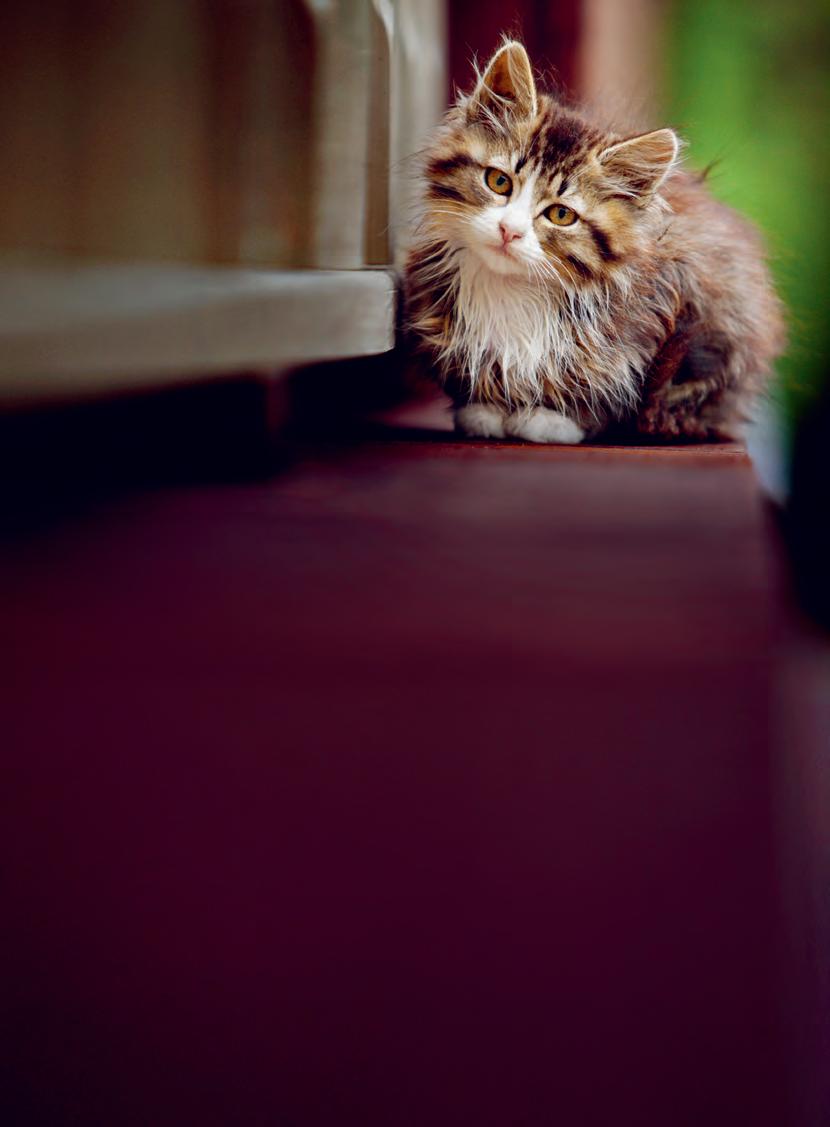
We also provide four weeks’ free insurance (terms and conditions apply) giving invaluable peace of mind and reassurance as you and your cat embark upon this lifelong friendship.
All he needs now is a loving home to make his dreams come true – over to you!

Find a Cats Protection cat looking for a home in your area. Simply scan the QR code with your smart-phone to use our new find-a-cat search tool, or get in touch on the details below. Thank you.
T: 03000 12 12 12
E: helpline@cats.org.uk
W: www.cats.org.uk
Reg Charity 203644 (England and Wales) and SC037711 (Scotland)
Elaine Paige “I Remember”

…MY UPBRINGING IN BARNET, NORTH LONDON, WAS WONDERFUL. There was my mum Irene (although everyone called her Dooker), my dad Eric and my elder sister Marion, with my grandparents and aunts and uncles all living close by. I went to a Church of England primary school and then to a local secondary modern school. It was a very secure, very simple suburban life.
…ACADEMIA WASN’T REALLY MY THING. I discovered my love of music, singing and performing. Dad was the drummer in his own band. If the war hadn’t come along, he’d have wanted to become a professional. But I inherit my voice from my mother; she had a beautiful singing voice.
…I WAS IN A SCHOOL PRODUCTION OF A MOZART COMIC OPERA. I sang the mezzo soprano role of Bastienne. I took the conscious decision to let out a heartrending sob at the end of the aria and then sank to my knees. There was a gasp from the audience, but for all the wrong reasons. They thought I’d forgotten my words and had collapsed with the strain of it all. I was very indignant. Didn’t they know I was acting? Obviously my father did, because he asked me afterwards whether I’d like to go to drama school. I couldn’t believe it! Suburban girls like me didn’t do things like that. But, by the end of the year—I was 16 by then—I’d enrolled on a threeyear drama course at the Aida Foster Theatre School in Golders Green.
entertainment | 07•2014 22
E
Photo: REX/Can
n guy
n
not-so-heavy

…INITIALLY, I FELT LIKE A FISH OUT OF WATER. All the other students seemed so confident, encouraged by their pushy parents. It made me retreat into myself even more. I

didn’t seem to have the necessary bravado. Quite a lot of that had to do with my height. Being a small person —I’m 4ft 11in—you don’t view life in quite the same way.
07•2014 | 23 P ER sonal Photos C ou R t E s y of Elain E P aig E
A
burden: with Billy co-star Michael Crawford; (right) Elaine at theatre school, aged 16
…I PERSEVERED. My parents were paying a lot of money to send me to stage school and I didn’t want to let them down. I also listened to my father: “Stick with it a bit,” he said, “and you might find it all comes right.” And that’s exactly what happened. By the end of the second term, I’d started enjoying myself. By the time I graduated, I was completely and utterly hooked on this life. My initial ambition was to get into a repertory company and learn on the job. But, because I could sing, I fell into musical theatre.
…I WAS IN THE ORIGINAL PRODUCTION OF HAIR IN 1968. Then I went on to appear in Jesus Christ Superstar in 1972 and, the following year, Grease with Paul Nicholas. I took over the lead role of Sandy, while Paul replaced Richard Gere as Danny. Paul and I had been together in Superstar. For once, this was a story where the girl gets the guy—although the main appeal for me was the transformation from sweet Sandy to Sandy the rocker, dressed from head to toe in black leather. Our final number was a raunchy duet, “We Go Together”, which Paul and I had to sing while jiving all over the stage.

Footloose and fancy-free: jiving with Paul Nicholas in Grease
actor but a perfectionist—as demanding of himself as of others. So there were inevitable tears and walk-outs, although no trouble between him and me. I played his loudmouth girlfriend Rita—and, as I discovered, had a voice to match. I was able to sing without a microphone, although, to balance the sound, the newly invented body mike was eventually used by all of us.
…THE MUSICAL BILLY WAS BASED ON BILLY LIAR BY KEITH WATERHOUSE. The title role was played by Michael Crawford, a hugely gifted
…MY 20 S TURNED OUT TO BE A BIT OF A DISAPPOINTMENT. They’d started well and then they stalled. At 29, I was seriously considering giving up the business and training as a nursery nurse. What I didn’t know was that the big one was just around the corner.
24 i RE m E mb ER | 07•2014
Whatever happened before or since, nothing can ever compare to my landing the lead part in Tim Rice and Andrew Lloyd Webber’s mould-breaking musical Evita. It was the most soughtafter role since the search to find the actress who’d play Scarlett O’Hara in Gone With the Wind . It was the defining moment of my professional career. It changed my life forever. And the opening night, June 21, 1978, will be etched on my memory for as long as I live.
…AFTER EVITA , I STARTED TO WORRY THAT I WAS A ONE-HIT WONDER. Driving home one night, a radio DJ played a fragment of a new Andrew Lloyd Webber song, “Memory”. As I climbed out of the car, keen to get back into the house because the DJ was going to be playing the full song after the midnight news, a bedraggled black cat crossed my path—a sign of good luck, my mother always said. In my haste to turn on the tape recorder, I hadn’t shut the front door properly. When I looked up five minutes later, the cat had followed me inside.
I went to sleep listening to this beautiful, haunting ballad with its operatic climax. I’m not particularly superstitious, but next morning the producer Cameron Mackintosh phoned—Judi Dench had had to pull out of the production of Cats just days before previews began with a torn Achilles tendon. Could I take over? I was apprehensive, but Cameron
explained the part of Grizabella was a cameo with just one song.
“It wouldn’t by any chance be called ‘Memory’?” I asked.
I played the part for nine months in London, and “Memory” became my signature song. The black cat stayed with me for the rest of her life. No prizes for guessing what I named her.
…I OPENED IN ANYTHING GOES ON INDEPENDENCE DAY, JULY 4, 1989. The Queen Mother was a fan of Cole Porter and asked to see the show on her 89th birthday. Afterwards, I

A stroke of fate: landing
in Cats
r eader’s d iges t 25 07•2014 |
the role of Grizabella
was summoned to the royal box to be presented along with co-stars Bernard Cribbins and Howard McGillin. I duly took her hand, fell into a deep curtsey and was instantly overcome with cramp. I was stuck! Then, to my amazement, and with a sudden burst of superhuman strength, she hoisted me upright. Finally, she broke the stunned silence. “I thought that only happened at my age,” she said.
…PLAYING É DITH PIAF WAS ONE OF THE HIGHLIGHTS OF MY CAREER. It was a hugely taxing role. Not only did I have to grapple with her despair from the age of 15 through drugs, alcohol, the pain and the angst of lost love, but also the physical pain of a broken jaw and arthritis leading to her premature death at 47 in 1963. Playing her life almost finished me off. Piaf was a fulllength drama with more than a dozen songs to perform in their entirety. But then I always say I’m an actress who sings rather than the other way round.
 As Norma Desmond in Sunset Boulevard
As Norma Desmond in Sunset Boulevard
…TO BE HONEST, I SHOULD HAVE CREATED THE ROLE OF NORMA DESMOND. But I wasn’t even asked to audition and I think I know why. Andrew [Lloyd Webber] asked me
if I’d sing “With One Look”—it was called “Just One Glance” back then— from Sunset Boulevard at his wedding breakfast. I didn’t have long to learn it and then, just as I was about to stand up, I was handed a completely different set of lyrics. So I took them with me up onto the stage and everything that could go wrong did go wrong. At the end, I threw the new lyrics up into the air because I was so disappointed in myself.
Everybody was there: Trevor Nunn,
26 I remember | 07•2014
Cameron Mackintosh, all my contemporaries. Looking back, it could have been considered as a sort of audition. Then, when it came to the official auditions for Sunset, I wasn’t asked to be seen. The part went to Patti LuPone. In the end, Norma finally came to me when I was 50. In fact, it turned out to be my Broadway debut.
…MY PARENTS

Bursting with pride: Elaine with her parents at Buckingham Palace
WERE ALWAYS MY BIGGEST FANS. They never, ever missed a first night in all the years they were alive. So it was a great thrill to invite them to accompany me to Buckingham Palace for my OBE investiture in 1995. I don’t know which of us was the most proud!
…PLAYING ANNA IN THE KING AND I WAS A GRUELLING EXPERIENCE. The nightly 64-bar polka, large crinolines in spiralling heat and a succession of actors playing the King combined to make it an arduous role.
It took me some time to recover but I bounced back because this is the life I love. I can hardly believe it but—if you’ll forgive the terrible old cliché—it really does feel as though it’s gone by in the blink of an eye.
As told to Richard Barber
For details of elaine Paige’s 50th anniversary tour, visit gigsandtours.com or call 0844 811 0051.
ask a silly question...
you would hope that our courts of law would be sensible places. the following transcripts, from rinkworks.com, suggest not:
lawyer: “Doctor, did you say he was shot in the woods?”
Witness: “no, i said he was shot in the lumbar region.”
lawyer: “the youngest son, the 20-year-old, how old is he?”
lawyer: “What gear were you in at the moment of the impact?”
Witness: “gucci sweats and Reeboks.”
lawyer: “you were there until the time you left, is that true?”
r eader’s d iges t 27 07•2014 |


We sent a lifelong ABBA fan to assess Sweden’s new museum dedicated to the band

MyasDay a Dancing Queen
By Chlo Ë Bryan-Brown
entertainment 29
A ferry is tAking me to DjurgårDen, one of the islands that make up Stockholm. Behind me, the Old Town glitters in the morning sun and ahead of me a roller coaster seems to rise from the water like a sea monster: Djurgården is a leisure resort popular with locals, and the wind carries the shrieks from the fairground. But I’ve come to see a museum dedicated entirely to a pop group who haven’t played in 30 years. My friends are green with envy. Even my children begged to come.
ABBA
The ABBA Museum has been open for just three months when I visit, but has already had 100,000 visitors— and an astonishing 80 per cent are from outside of Sweden. Although I see no posters for the museum on my way there, I enter to find it heaving with visitors.
When your allotted time slot comes around, you pass a replica of the famous ABBA sign made up of light bulbs, and then enter a cinema. Here, dazzling footage of the band performing fills the wall and the blasting music engulfs you. suddenly it’s 1974, in a shabby semidetached house in Selsey Bill, a small town on the south coast of Britain. I'm nearly seven and can’t sleep because of the pulse of pop music, and applause rising through the ceiling. Crouching at the top of the stairs, I can
just see the small black-and-white television in the sitting room below and my five older siblings squeezed round it. Like everyone else in Europe, they're glued to the Eurovision Song Contest, this year coming from Brighton, just 40 miles away.
Expectations are sky high for the British entry Olivia Newton-John, singing “Long Live Love”. But it’s the Swedish group ABBA, striding out on stage in sliver platform boots, silky knickerbockers, swirling skirts and tops decorated with gleaming chains, who steal the show with their song “Waterloo”.
It’s ABBA, striding on stage in silver platform boots and swirling skirts, who steal the show
So began my romance with ABBA— they were there when I was growing up in the 1970s, there when I left home for university in the 1980s and into the 1990s when I moved to London and “Dancing Queen” was in every pub and club.
My day as a dancing queen | 07•2014 30
previous
spre AD : (Chloe) p etter mA gnusson; (ABBA) sCA npix
Our writer dances in the recreation of a 1970s night club: flashing lights, a glitter ball and lit-up squares on the floor
back to the present, I step into the next room, taking us back to the days before ABBA, when each member of the band had success in their own right. There are black-and-white childhood photos and newspaper clippings, videos of Frida in dance bands, and a young Agnetha singing in a park with two clean-cut men. You see Björn, the poor boy from nowhere, in folk group the Hootenanny Singers. Benny was cooler and played in a band modelled on the Beatles called the Hep Stars.
Every visitor gets an audio guide to hold to their ear. At each exhibit you scan your handset and the relevant audio plays, so you view the museum at the pace you choose. Now I’m hearing how it was chance, friendship, romance, then marriage that brought the band together—Agnetha, Benny, Björn and Anni-Frid are discussing their memories. Remembering the bitter lyrics to “The Winner Takes It All”, I’m amazed to hear them talking so fondly of how they met and fell in love—Agnetha saying how much she fancied Björn and the wonderful wedding they had. I discover that piano maestro Benny can’t read music and Anni-Frid, who was taught to sew by the grandmother who raised her, often helped with the costumes.
The rooms in the museum are sequenced to follow the band’s career.

p hoto: p etter mA gnusson
at the centre of the museum are a series of installations that reconstruct the real places in the ABBA story. There’s the recording studio where the famous ABBA wall of sound was created, featuring the actual mixing desk used. There’s the summer house on the island of Viggsö where Benny and Björn wrote many of the songs. There’s Agnetha and AnniFrid’s dressing-room, complete with the shimmery make-up and Champagne flutes for the one glass they each allowed themselves before going on stage. There are mock-ups of the offices of record label Polar Music and the workshop where the band’s costumes were created. But the one that moves me most is home-loving Agnetha’s kitchen. Here, among the There are also chances to step into their world, even to become a fifth member. One room is like a live performance —when it ’s your turn, choose a song then step onto a stage. The band appears as holograms and you're dancing and singing with them. No one seems to suffer stage fright, and your “audience” of other visitors clap and cheer. Another room films you in real time and projects you into a pop video. There are booths where similar technology allows you to “try on” ABBA costumes: you choose an outfit and your face is projected onto an image of it on the wall that you can move around in. There’s an interactive quiz so you can test your knowledge of the band—I did miserably, but you can have a go yourself on page 35.
The museum opened to great fanfare—enjoyed by Swedes and fans from abroad

My day as a dancing queen
p hoto: j oh A n l ygrell/©ABBA themuseum
stripped-pine fittings and gingham curtains, she cooked cabbage pudding with lingonberry jam.
Björn’s memories on the audio guide give it particular poignancy as he describes the moment, after he and Agnetha split, when he watched out of the kitchen window as their daughter walked down the path to school, and realised she was growing up and slipping away from them.
Back in London, Björn hears I’m writing about the museum and arranges to call
In the studio is a recording booth where you can add the vocals to a song, or have a go at remixing an ABBA track. In one corner, on a pedestal against a
wall of kitsch brown and orange wallpaper, is a 1970s-style phone. Only the band members know the number for it and any one of them could “Ring Ring” at any time.
“Have they ever?” I ask a guide.
“Just the once,” he says. “It was AnniFrid and the guy who picked it up—a Venezuelan fittingly named Fernando —couldn’t believe it.”
Such daring attempts to bring the real band into the experience can be over-reaching: in the studio is a piano that was meant to be linked to Benny’s piano at home—when he plays, the
ABBA aficionados have a chance to join “the band” and sing along

Reade R ’s d iges t
p hoto: p etter mA gnusson
TO THOSE WHO ARE VULNERABLE AND ALONE, I LEAVE COMPASSION, REASSURANCE AND HOPE
When you write or update your will, please remember the work of the British Red Cross. By leaving just 1% of your estate, you can make sure we’re always ready to help people in crisis, whoever and wherever they are, in the UK or abroad.


Find out more about remembering the British Red Cross in your will. Call 0800 138 4554 or visit redcross.org.uk/giftinwill today for your free information pack.

The British Red Cross Society, incorporated by Royal Charter 1908, is a charity registered in England and Wales (220949) and Scotland (SC037738).
test youR aBBa knowledge
Questions taken from the interactive quiz at the ABBA Museum
1 Who is the youngest ABBA member?
a Agnetha B Benny C Björn d Anni-Frid
2 Which musical does not feature songs written by Benny and Björn?
a Kristina B Chess C Mamma Mia! d Cats
3 ABBA: The Movie features ABBA in concert. In which country were the shows filmed?
a Australia B Sweden C UK d USA
4 Which ABBA member was not born in Sweden?
a Agnetha B Benny C Björn d Anni-Frid
5 Who was ABBA’s sound engineer?
a Michael B Tretow B Stig Anderson C Anders Hanser
d Lasse Hallström
6 With whom did Benny and Björn write the musical Chess?
a Andrew Lloyd Webber B Tim Rice C Stephen Schwartz
d Stephen Sondheim
7 Which album was released in 1979?
a Voulez-Vous B ABBA: The Album C Super Trouper d Arrival
8 Where was the Chiquitita “snowman” video filmed?
a Sweden B Iceland C Switzerland d Italy
9 Who replaced Agnetha when ABBA appeared on television abroad in 1973?
a Inger Brundin B Lena Andersson C Kicki Moberg d Maritza Horn
10 What was the B-side of the “Under Attack” single in most countries?
a “Cassandra” B “You Owe Me One” C “The Visitors” d “I Am the City”
notes are reproduced at the museum. Sadly it isn’t working and the guide says it’s unlikely ever to.
All the exhibits are so personal and affecting that I’m not surprised to discover the museum curator is Ingmarie Halling, ABBA’s former wardrobe lady. Only someone who knew the
band well could do such a good job of conveying what it was really like to be a part of it.
Later, back in London, I have my own “Ring Ring” moment when Björn hears I’m writing about the museum and arranges to phone. Ten minutes
07•2014 | 35 Reade R ’s d iges t
answe R s : 1: a 2: d 3: a 4: d 5: a 6:B 7: a 8:C 9: a 10:B



Great Books for Every Reader


The Crossing

Rajendra Abhyankar
www.iUniverse.com
978-1-4917-0509-4 | Hardback
978-1-4917-0507-0 | Paperback
978-1-4917-0508-7 | E-book




The Mass
How to explain what we do on Sunday to our children and friends
John Mac Mahon
www.authorhouse.co.uk
978-1-4817-7575-5 | Paperback
A fascinating portrait of one man’s painful journey into the dark recesses of terrorism which led to killing of Indian Prime Minister Rajiv Gandhi. Hari, a young Tamil, becomes unwittingly enmeshed in Sri Lanka’s explosive ethnic war, unaware that his choices will eventually lead him down a tragic path.
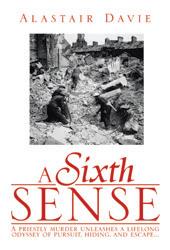

For parents passing on the Catholic faith to their children and friends, this book will help them explain what Catholics do on Sunday and why they do it. This book is suitable as an instruction text-book in Post-Primary Schools.
A Sixth Sense

A priestly murder unleashes a lifelong odyss ey of pursuit, hiding, and escape . . .
Alastair Davie

www.xlibris.com
978-1-4931-7498-0 | Hardback
978-1-4931-7501-7 | Paperback
978-1-4931-7496-6 | E-book
A fugitive Irishman volunteers for the Republican Army in the Spanish Civil War. Afterwards, he is recruited by the Germans to reconnoiter Belfast. He escapes from the Abwehr and British intelligence. After the war, he nds peace as a vicar, but his past catches up with him, leading to a nal pursuit.
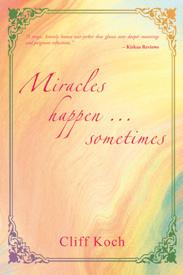





The Magic Stones

Grandma Nor

www.xlibris.com
978-1-4653-8521-5 | Paperback
In The Magic Stones , there’s no rabbit hole, Hogwarts or even Narnia to get lost into. But there’s a cave. It tells of Molly and Pete who go up a hill seeking the cave their fathers have been talking about, not knowing the magic and wonders they will nd their.
Miracles happen - sometimes
Cliff Koch

www.iUniverse.com
978-0-5954-7368-7 | Paperback | 978-0-5959-1646-7 | E-book
Once the damage has been done, there is no turning back. In this book, author Cli Koch shares an eye-opening example that gives more meaning to the aforementioned phrase. Koch shares a true account of one person’s incredible journey of survival once the residual e ects of anorexia and bulimia take over the body. Retelling his wife’s life story and ght towards recovery, Koch highlights the many damaging e ects of the two eating disorders; warning readers not to take them lightly. With Pamela’s ght and resiliency as his proof, in the end Koch inspires and tells everyone that indeed, Miracles happen – sometimes.





REMARKABLE BOOKS TO ENJOY AGAIN AND AGAIN. ORDER YOURS TODAY!
before he's due to call, my husband, children and I gather round the phone, squabbling over who will answer.
As the museum’s main financial backer, he’s delighted with the public’s positive response. “We wanted to tell the true story, which is worth telling, I think, of how four people got together almost by chance and grew organically into ABBA. The museum brings people closer to that story,” he says.
He also hopes it brings fans closer to the extraordinary people who worked behind the scenes. “We wanted to show that there were so many gifted people behind us,” explains Björn. “At every turn someone so talented—the sound, the management, the videos.”
places. We didn’t want to tour—we’d all done that in our previous careers and now had children. We also wanted to spend more time in the studio because perfecting our sound was our obsession.”
Among the memorabilia are fan letters—from Poland, Nigeria, France, Yugoslavia, Germany, South Africa, Zimbabwe, Algeria, Brazil, Ireland, Greenland, Iran and Israel—that show just how effective the band were at reaching right round the globe.
The museum’s goal is simple and joyous: that “you’ll walk in and dance out”
Ah, those videos, beaming ABBA into homes around the world, getting me and my friends dancing and pouting around the room. “We pioneered them,” says Björn, “and they helped us achieve fame in Australia and other
The museum’s mission statement is simple and joyous—that you’ll “walk in and dance out”. So where better to end my visit than at a disco?
There’s a recreation of the kind of 1970s nightclub I used to love, with flashing lights, a glitter ball and lightup squares on the floor. I’m glad my children weren’t there to be embarrassed, because I danced—I, and all the other 40-somethings blissfully transported back to our youth.
antisocial netwo R king
the prize for the most helpful criminal goes to:
A burglar from West Virginia who checked his Facebook account mid-robbery and fled the scene without logging out, thus leaving his contact details.
f R om fusion.net
07•2014 | 37 Reade R ’s d iges t


Tame Your Blood Sugar Forever
Here’s the master key to feeling good and shedding weight
By Lisa Fie L ds
07•2014 | 39
Hea Lt H
Illustrated BY ed fother I ngham
For years, Tausha Moore oF ann a rb or, Michigan, got through her busy workdays by grabbing a granola bar or snack cake as a quick midafternoon pick-me-up. She’d get an energy boost, but all too soon Moore felt tired and hungry all over again. It’s a pattern familiar to many.
Unfortunately, our diets are full of sweet and starchy foods that can send us on a wild ride on the bloodglucose (or blood sugar) roller coaster. We'll reach for a quick biscuit, chocolate bar or sugary drink (they’re

by starting a chain of events that eventually sends us shopping for bigger jeans.
“We want to help the body burn fat, but when we eat quickly digested carbohydrate foods, we’re encouraging the body to burn carbohydrates,” says Jennie BrandMiller, co-author of The New Glucose Revolution and professor of human nutrition at the University of Sydney. “When our carbohydrates stores become low, we keep topping them up by eating. The body has got to put the fat somewhere —it tucks it away in the wrong places.”
When our carb stores become low, we keep topping up by eating
called convenience foods, after all), which are fast-acting, dissolving rapidly in the stomach.
These foods flood our bodies with glucose and get us going. The trouble is, as Moore experienced, the surge doesn’t last long, leaving us feeling worse off than before—and hungry again well before the next meal time.
It’s no wonder that many of us weigh more than we’d like to. The all-to-common combination of eating too much and exercising too little get the lion’s share of blame, but yo-yoing blood sugar contributes
Sound bad? Low energy and weight gain are only the tip of the iceberg. Unless we have diabetes, we never give our blood glucose a second thought. But researchers now know that, whether or not we have diabetes, a diet loaded with foods that send blood glucose soaring can increase our risk of heart disease by damaging blood vessels and raising our cholesterol. It may even chip away at memory and increase our risk of certain cancers.
This realisation is a revolution in the way we understand diet and health. Fortunately, none of the damage happens overnight, and even modest changes in the foods we eat every day can start us on a healthier path.
| 07•2014 40 Tame Your Blood Sugar Forever
Why blood glucose matters
The body obtains energy from all food types—protein, fat—but the main energy source is carbohydrates. Most foods (apart from meat and oils) contain at least a little carbohydrate. Some foods, such as potatoes and sugary snacks, contain more carbs than others. When we eat, our bodies break down carbs into sugars, including glucose, then release them into the bloodstream. Our pancreas simultaneously secretes insulin into the bloodstream, which allows the cells throughout our bodies to absorb glucose for energy.
For most of us, even when our blood glucose soars after a large meal, our body can bring it back to normal in a few hours. But sometimes the body doesn’t respond to insulin as expected, so the pancreas produces more than usual. This can lead to a vicious cycle of insulin resistance, with the pancreas working harder and glucose levels building up in the blood.
“There's evidence from animal and cell-culture studies that high glucose may be toxic to cells in the pancreas,” says Dr Christopher Nielson, professor of medicine at the University of Nevada, who has
5 secRets to BetteR BLood gLucose
eat regularly. Aim for three meals and two snacks daily. But keep an eye on portions to help fight insulin resistance and to lose weight. Favour “good” fats. Saturated and trans fats can interfere with your ability to control blood glucose, while healthy unsaturated fats help you remain in control.
include lots of protein, fibre or healthy fats in each meal to lower its overall blood-glucose load and help curb hunger.
use vinegar. One Italian study found that adding vinegar to salad lowered bloodglucose levels by 30 per cent. "The activity of some carbohydratedigesting enzymes is
inhibited by acetic acid, resulting in lower blood glucose,” says dietitian Constance Brown-Riggs. Citrus does the same.
try the mouth test to see if starchy foods contain fast-acting carbs. Take a bite, but don’t chew or swallow. The quicker food dissolves, the likelier it is to spike blood glucose.
07•2014 | 41 Illu ST ra T ed B Y ed F o TH er I ng H am Reade R ’s d iges t
studied the effects of high bloodglucose levels in non-diabetics. “High glucose exposure over time can be associated with impaired insulin synthesis. It’s one reason for controlling blood sugar.”
Today, 56 million Europeans have diabetes. By 2035, that figure will swell to 69 million, according to the International Diabetes Federation. “What’s the difference between diabetic and pre-diabetic? It’s a continuum and an issue of the definition,” Nielson says. “If your fasting blood sugar is 126, you’re diabetic. If it’s 125, you’re not. The diagnosis of diabetes may depend on a small change in blood glucose, but regardless of the diagnosis, complications seem to increase the worse your blood-sugar control is.”
Improving your diet could also ward off other conditions. “My data, and studies others have done, show that elevations of blood glucose are associated with risk for a number of problems, including vascular disease, heart failure and dementia,” Nielson says. Diabetes is associated with colon and pancreatic cancers, and high blood-sugar levels may put non-diabetics at risk too.
By now you’re wondering, “How can I get off the glucose roller coaster?” Take heart: it’s not that difficult. Modest lifestyle changes have been associated with reduced risks of disease, including diabetes and dementia.”
top 10 gi supeRFoods
a food-scoring system called the glycemic Index (gI) measures how quickly food is broken down into glucose. The following gI “superfoods” are particularly nutritious as well as having a low gI, which means they release their sugars slowly. Incorporate as many of these foods into your diet as you can.
Legumes • Rolled oats • Barley • Rye • Wholemeal pasta • Low-fat dairy foods
• Citrus fruit
• Apples and pears
• Soy milk
• Vinegar
souRce: tHe gi cookBook
Good carbs and bad carbs
There are two kinds of carbohydrates: slow-acting and fast-acting. Getting off the glucose roller coaster means eating more of the slowacting carbs, which are gentle on your blood glucose, and less of the fast-acting carbs, which drive the wild swings in blood-glucose levels.
“The theory is the less fluctuation in blood glucose you have, the more satisfied you feel,” Brand-Miller says. “The steep decline produces hunger. There’s some evidence in animals and humans that they start meals when blood-glucose levels are at their lowest.”
| 07•2014 42 Tame Your Blood Sugar Forever
Whether carbs are fast- or slowacting depends on a food’s starches and sugars, how the food is cooked and whether it’s processed. The less processed, the better.
And watch out for fast-acting natural carbs: limit starchy vegetables, some rices and fruit juices.
“Consider eating an orange versus drinking orange juice,” says Academy of Nutrition and Dietetics spokesperson Constance BrownRiggs, a dietitian in New York. “The body digests juice very rapidly, so glucose is released quickly...chewing fruit takes longer and there’s fibre, which takes longer to digest.”
Surprisingly, pasta, even if it’s made from white flour (which is milled and processed), releases its carbs more slowly than potatoes or breads. That’s because pasta starch is trapped in a network of protein molecules, so it takes work to digest. But overcooking breaks down some starches, easing digestion and leading to blood-sugar spikes.
Know your sugars
You might assume that controlling your glucose means avoiding all sweets, but not all sugars are the
same. Sucrose (table sugar) causes spikes and drops in blood-glucose levels. But fructose, occuring naturally in fruit and non-starchy vegetables, and lactose in dairy products, enter the blood-stream more slowly.
“Most people don’t appreciate how much sugar they’re eating,” says Dr Andrew Bremer, programme director at the National Institute of Diabetes and Digestive and Kidney Diseases in Maryland. “The amount of added sugar in the typical Western diet has increased over the years, and it’s paralleled the rise in obesity and type 2 diabetes.”
Tired of the glucose roller coaster, Tausha Moore took action. “I read about how sugar crashes make you crave more sugar,” Moore says. “That’s what was happening to me.” So for a year, she’s avoided foods with added sugar, opting for fresh fruit or wholegrains. With fewer glucoseinduced spikes and drops, she feels more even-keeled at work.
“I snack less often and have a fairly high energy level,” she says. “My diet gives me the energy and mood boost I need without the negative effects I was experiencing with sugar.”
stating
“Warning: high in sodium.” as seen on a salt cellar.
guy-spoRts.com
07•2014 | 43 Reade R ’s d iges t
a dap T ed F rom “Tame Your Blood Sugar Forever,” pu B l ISH ed BY HealTH Smar T ( a u S T ral I a), and "T H e g I C ook B ook", pu B l ISH ed B Y r eader‘ S dI ge S T ( a u S T ral I a)
e o B vious
t H

What happened to two devoted parents and their child shocked everyone at the hospital
11 Hours in Room...
By Tim Bo T os from cantonrep.com
44

Still inSide hiS mum’S womb, Austin Gerstenslager began a journey to his birth and certain death.
It was shortly before noon on August 18, 2012, a Saturday. A half a dozen nurses and assistants wheeled the mother and her unborn baby out of room 407 in the birth centre of the hospital. The bed glided across glossy tiled floors, en route to an emergency caesarean section.
HealTH
photographs by s hannon t aggar t
Tears slid down Keri Gerstenslager’s cheeks. It was 14 weeks before her due date. Even worse, her waters had broken six weeks earlier and had slowed the foetus’s development. Doctors and nurses converged on Austin after his birth. They threw everything that technology and medicine could offer at the tiny baby. Nothing seemed to help. Everyone concluded that his lungs were not mature enough to keep him alive.
Dr Roger Vazquez, the neonatologist who treated Austin, said he had zero chance of survival.
The Gerstenslager family had prepared for this moment. They’d memorised survival rates of premature babies born at various intervals of gestation. They’d thought long and hard about the fine line between selfish and selfless decisions. So after much soul-searching, baby Austin was removed from life support. He was taken back to room 407.
Together there, Keri and her husband Chip held their baby and waited for him to slowly die. And that’s when this story actually begins.
Chip, 43, and Keri Ger StenSl aGer , 34, already had two children. Keri had no trouble conceiving either of their blonde daughters, Kendra, six, and Erika, three.
“We just felt we were supposed to have another baby,” Keri said. They decided to try for number three. But pregnancy didn’t happen as easily for
the couple this time. In the end they tried IVF, and it was successful. In February 2012, Keri began her pregnancy with three embryos growing inside her.
After a few months, though, she lost two. At 20 weeks, with one baby left, her waters broke.
Keri prepared to go into labour, but it didn’t progress. Doctors put her on bed-rest to try and save the third and final foetus.
Keri read up on S urv ival rate S of premature babies. But those statistics were for “ideal” situations in which the mother’s waters hadn’t broken. On a calendar, Keri marked off each day that she remained pregnant. Her goal: make it to the 26th week—August 18, to be exact. If she got that far, the Gerstenslagers would try everything within reason to save their baby’s life.
They would name him Austin and had selected the middle name of Luke. St Luke is the patron saint of physicians and surgeons. “We felt he was going to need that. He was probably going to have a lot of physicians involved in his life,” Keri said.
With all but one day crossed off her calendar, Keri went into labour on August 17, a Friday. Her contractions were four minutes apart.
The couple arrived at Aultman Hospital in Canton, Ohio, at noon that Friday. Keri landed in room 407, an antepartum suite for expectant
11 hours in room 407 | 07•2014 46
mothers with pregnancy complications. An ultrasound revealed that Austin’s measurements were more in line with a 23-week-old, not a 26-weeker. The lack of amniotic fluid had stunted him.
A foetus develops exponentially with each week it’s inside a womb. The next day, no matter how it turned out, she would reach her self-imposed minimum of 26 weeks, right on the nose.
She made it—barely.
With a foetal heart-rate monitor connected to Keri’s stomach, doctors
He doesn’t look that bad , thought Dr Vazquez.
The baby’s colour was good. Chip swore he heard him cry.
Placed inside a mobile incubator, Austin was wheeled to the neonatal intensive care unit (NICU). Then Dr Vazquez and a team went to work. They slid a tube down his throat. They coated his lungs with surfactant (a chemical many premature babies lack) to prevent them from collapsing. They placed him on an oscillator, a machine that breathes for him.
Austin was removed from life support. He was taken back to room 407. There, Keri and her husband held their baby and waited for him to die
and nurses watched Austin’s heartbeat. At about 10.30 the next morning, his rate dipped. It’s called a decelerating heartbeat—a sign that the baby is in distress.
Labour and delivery nurse Jodi Johnson, who has three sons of her own, tried to reassure Keri. So did Chip. Then Keri’s obstetrician, Steven Willard, entered the room. He told her she had to deliver immediately.
au S tin lu K e Ger S ten S l a G er wa S bo rn at 12.17pm. His left eye was fused shut. The length of a school ruler, he weighed just one pound and nine ounces.
He was on pure oxygen, but didn’t respond well.
The oxygen saturation level in his blood hovered near 55 per cent. It should have been 90 per cent by then. Dr Vazquez wasn’t surprised. Austin’s lung tissue had probably stopped developing a couple of weeks after Keri’s water broke, he reasoned.
Dr Vazquez went to the recovery room where Keri was waking to speak with her and Chip.
“Zero chance of survival,” Dr Vazquez said when pushed for odds. Even if Austin is put on life support, his organs would fail, he told Chip.
Dr Vazquez handed Austin to Keri.
07•2014 | 47
Reade R ’s d iges T

The Gerstenslagers had agreed weeks before not to turn their infant into a science experiment just to ease their guilt. They’d tried to save him, and it didn’t work. It was time to let him go. If he was going to die, he’d leave this earth cradled in his mother’s arms— at peace and in no pain.
By 1.30pm, Chip, Keri and Austin had returned to room 407.
k eri held aus ti N clo se. “I love you...we love you,” she whispered to him. In the next few hours, Chip’s parents, brother and sister, and Keri’s mother came into room 407 to meet and say goodbye to Austin. Keri wouldn’t let anyone hold him. She was afraid he’d die in someone else’s arms.
Alone again, Chip and Keri admired their baby as he snuggled into Keri’s chest.
“Look at his blonde eyebrows,” Keri cooed.
“His hair, his fingernails.”
The end, they believed, was coming soon. And that was OK. The only sound in the room was an occasional beep from Keri’s IV line. NICU nurse Melissa Giannini popped in every so often to check Austin’s heartbeat. When it was time for him to die, his heart rate would begin to slow.
After four hours, Austin was still breathing. His heart thumped at a healthy 120 beats per minute. He moved his head when Keri’s IV beeped. He wrapped his fingers and toes
around the fingers of his parents. The Gerstenslagers wondered if they were doing the right thing.
They summoned Dr Vazquez. “Sometimes it just takes a while,” he explained. Austin had a strong heart, he told them.
Giannini placed a stethoscope on Austin’s chest. He tried to swat it away. Four hours became five, then six. Still 120 beats per minute.
What’s going on? Chip thought.
Nurse e rica Bucklew Beg aN her shift in the NICU at 7pm. Austin and his parents remained in room 407, still waiting for the end. Word about this baby had spread throughout the unit. This baby who wasn’t acting like a baby on the verge of death.
“Everyone was talking about him,” Bucklew recalled. “We all waited for updates.”
Back in room 407, the minutes and hours ticked away. Nurse practitioner Fran Kessler had taken over the NICU for the night. Giannini kept checking on Austin. He was going strong.
“Would you come with me next time, to meet him and his parents?” Giannini asked Kessler.
It was about 11pm. Kessler introduced herself to the Gerstenslagers.
“Do you mind if I take a peek?” she asked Keri.
Austin was snuggled in so tight that Kessler could barely see him. She lifted the blanket. Austin sucked on a dummy. She checked his heartbeat.
07•2014 | 49
Reade R ’s d iges t
For every stage in life trust Vitabiotics

































UK’s No.1 range for specific life stages

As we move through life our nutritional requirements change, so why take an ordinary multivitamin when there is a supplement tailored to your specific needs? The award-winning Vitabiotics range offers comprehensive nutritional support from sensible, balanced formulae. With over 40 years’ experience, there is no supplement range for specific life stages more relied on than Vitabiotics.

From , Superdrug, Holland & Barrett, supermarkets, health stores,independent pharmacies & www.vitabiotics.com
*(IRI






ADMIX1SNRP 30-04-14E
value data. 52 w/e 02 Nov 13). † Professor Beckett is not cited in the capacity of a health professional, but as a product inventor and former Chairman of Vitabiotics.
Only Keri held Austin in the hours after his birth. She didn’t want him to die in anyone else’s arms
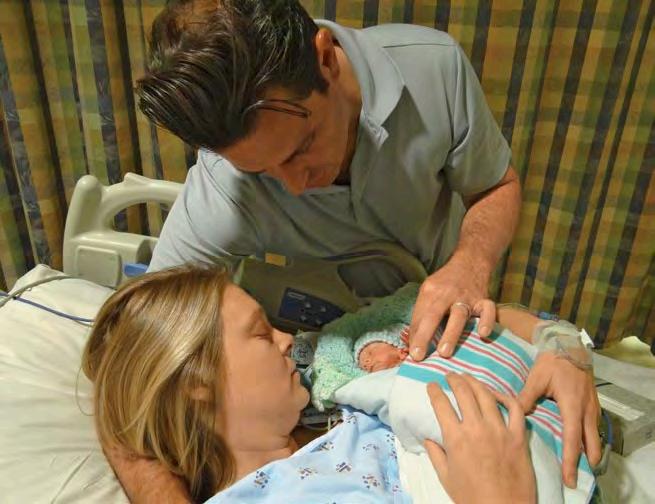
She could barely hear it because he was sucking so hard.
“He’s beautiful,” Kessler told Chip and Keri. “His heart is strong...he’s moving air. He even has a little bit of an attitude about him. Do you mind if we run a few tests? I’m not trying to change your mind. We just want to see where we are.”
Austin’s blood oxygen saturation registered 88 per cent, normal. A blood gas reading showed an acceptable level of carbon dioxide in his blood. His blood was not acidotic, which meant he was getting sufficient oxygen into his body.
The clock passed midnight. Austin
had lived into the next day. It was a milestone for Keri, though she couldn’t explain why.
Kessler, who’d phoned Dr Vazquez before running the extra tests, phoned him again. He digested what she was telling him.
Kessler put Chip on the phone. “The game has changed,” Dr Vazquez told him. Chip Gerstenslager said he’ll remember that sentence for the rest of his life.
It was 12.20am, about 11 hours since they’d entered room 407 to allow their baby to die. Nurse Giannini put Austin back into the incubator and away she went with him to the NICU. They were
07•2014 | 51
er
courtesy of keri Gerstensla G
Reade R ’s d iges t

“Austin continues to be a fighter,” says Keri. Weekly therapy keeps him on track with milestones. In this photo from last year, he’s on supplemental oxygen to help his lungs
going to try to save him. Keri and Chip looked at each other.
“What just happened?” Chip asked his wife.
An IV l I ne w A s I nse rted I n to AustIn’s umbilical-cord vessels. The NICU team tried the oscillator again to help him breathe. They settled on a simple CPAP , which blows a continuous stream of air into the nostrils. Austin made it through the morning and then the day.
Dr Vazquez said he’d never been so glad to be so wrong. In his 18 years at Aultman Hospital, the physician said, nothing like this had ever happened. He still can’t make sense of it. He’s shared the story with other neonatologists, and they couldn’t come up with a good explanation for Austin’s survival either.
“By all rights, he shouldn’t have had developed lung tissue,” Dr Vazquez said. “Most babies do what you expect,
and they tend to get worse before they get better. This baby, not only was he breathing on his own for 12 hours, he was able to make sugar for himself. He did better without the technology than he did with it.”
In all, Austin spent 100 days in the hospital. His time was filled with some ups and downs, just like most of the 400 babies who come through the NICU every year. Like all of them, he’ll be more prone to physical or mental developmental problems. But his family will worry about them then, not now.
On the night before his release from the unit, Keri wrote on her Facebook page: “As I sit holding my son in this NICU room for the last night, I worry about the next mum who will sit in this chair. A mum who this very moment probably has no idea that she’ll be sitting in a chair like this...I pray for her, that her outcome will be as good as ours.”
a R chitectu R al mishaps
When they’re not frying eggs on pavements, our latest architectural wonders are at least providing some spectacular views—as huffingtonpost.co.uk relates:
“Guests at The Shard are being warned to close the blinds, as some of them may get to see more than they bargained for. A quirk in the design of the Shangri-La Hotel on the upper floors of the 306m-tall skyscraper in central London means that glass panels protruding from the building’s corners act as mirrors once internal lights are switched on at night. It can provide an, er, unexpected glimpse of a neighbour.”
07•2014 | 53
Reade R ’s d iges t From Canton r ep.Com ( m ar C h 11, 20 13). Copyright © 2013 by g ate h ouse o hio n ewspapers, Canton, o hio
Is There Really Such A Thing As A Free Lunch?
By max pem B erton

Max is a hospital doctor and author. He’s also the resident doctor on ITV’s this morning
As A doctor there Are, simply spe Aking, three courses of action available when faced with sick patients: surgery, medication or wait and see. There’s also the fourth option of hiding in the toilets, but the nurses quickly become wise to this one.
In surgery, waiting to see if the problem resolves itself isn’t always popular with patients, as they feel that if they’ve made all the effort of arranging for someone to feed the dog, they’d rather something was done. Surgeons scoff at the wishywashy medics who prefer to use tablets to sort things out rather than cutting. This doesn’t mean that surgeons don’t like to dabble in the dark side of prescriptions though—a few of them are rather keen on dishing out the latest drug on the market, which just happens to coincide with which drug company has provided lunch at the weekly surgical meeting.
For A Few crisps And some doughnuts, a drug company gets ten minutes or so of the surgical team’s time to push their latest product. These drugs are more expensive than the current ones available, and when you look closely at the evidence they often can’t even be proved to be as effective. The problem is, it’s presented as scientific research rather
| 07•2014 54
Healt H

than what it really is: promotional material.
The doctors who sit in on the drug rep’s patter are the same doctors that scoff at Miss Miller. We admitted her a few days ago with recurrent stomach pains, and rather than operate it was decided to wait and see if it got better on its own, which it did.
“I think it’s down to my new homeopath” she says on the ward round, just before we discharge her.
Several of the doctors suppress a laugh, while the consultant guffaws in her face.
“New–age rubbish,” he says. “These things just get better on their own, given time. Homeopathy? Huh! No reliable evidence that it works at all.”
The other surgeons agree and walk off shaking their heads.
“I think it works,” Miss Miller whispers to me.
“Well, if it makes you feel better, there’s no harm in keep taking it,” I reply, and run to catch them up.
I’m just in time to catch the instructions for the next patient and, no surprises, the consultant —apparently no longer concerned about reliable evidence—has prescribed the new drug we’ve just spent lunchtime learning about.
i’d like to think i’m not affected by drug company marketing; that I prescribe medicines sensibly. I’d like to think that I wouldn’t allow myself to be bought by a few sandwiches. I’m still relatively junior though, so we’ll have to wait and see…
07•2014 | 55
Istock.com/h I desy
medical mytHS—BuSted!
If You Get Stung By A Jellyfish, You Should Urinate On The Sting

WHat’S tHe trutH?
There’s absolutely no evidence that this works, and it was categorically shown to be a myth by the journal Scientific American in 2007. They reviewed all the research and found not a shred of evidence to suggest urine helped alleviate the pain at all. There’s actually some evidence to show that urinating on an area of skin that’s been stung can make the sting burn more, as it causes the
stingers still in the flesh to release more venom.
WHere did tHe mytH come from?
It seems to be an old wives’ tale and no one knows where it comes from. The myth may have been perpetuated when it featured as part of the storyline in an episode of the sitcom Friends.
So, tHere’S notHing to Worry aBout?
Being stung by a jellyfish is no fun. There’s some evidence that putting the affected area in hot water can help to break down the chemicals that cause the pain. Some (but not all) jellyfish stings are alkaline, so they can be treated with vinegar. There’s also some evidence that pouring salt water over the affected area helps. But, thankfully, there’s categorically no reason to add insult to injury by having the wound urinated on. What a relief!
| 07•2014 56
Healt H Illustrat I on By d av I d h umphr I es














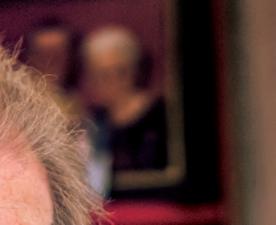




“Blind

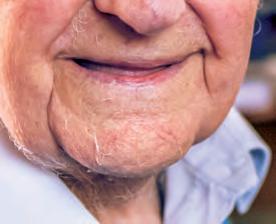












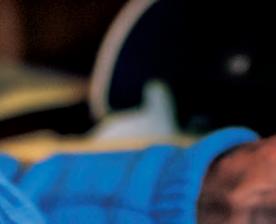












Life beyond sight loss
Veterans UK provided me with so many useful gadgets and taught me the skills to use them. They’ve
me cope with my sight loss and regain my independence.”
Early Royal Artillery Veteran with age-related sight loss Free services for blind Armed Forces and National Service veterans Call: 0800 389 7979 Visit: www.noonealone.org.uk Blind Veterans UK, 12-14 Harcourt Street, London W1A 4XB. Registered Charity No. 216227 (England & Wales) and SC039411 (Scotland)
helped
Bob
It’s Never Too Late To Change
BY sUsannaH HicKlinG

Susannah is twice winner of the Guild of Health Writers
Best Consumer Magazine
Health Feature
Will the things we do when we’re young come back to haunt us in the future? Here are some common worries:
■ I SLEPT AROUND. Frequent sex, whether with one partner or many, doesn’t damage your body (assuming you’re not doing anything too “out there”). But you do put yourself at risk of sexually transmitted diseases. And the more partners a woman has, the higher the chance of getting HPV (human papillomavirus), which could lead to cervical cancer. Keep having smears until 65—after that, the risk is lower.
■ I INHALED. The bad news about marijuana smoke is that it contains 50 to 70 per cent more carcinogenic hydrocarbons than tobacco smoke. Meanwhile, cigarettes kill one out of every two people who smoke them regularly. The good news?
QUack QUESTION
QDoes the condition known as “brain freeze” exist?
aYes. It’s that brief headache you get when you eat ice-cream too fast. It’s called—and this is more of a mouthful than a Magnum— sphenopalatine ganglioneuralgia, and happens when arteries in your
head dilate and contract. It’s their way of telling you that they don’t like the rapid temperature change. Dangerous? Not at all. Curable? Absolutely—just eat that ice cream more slowly or jam your tongue up to the roof of your mouth, where it’s warmer.
HealTH | 07•2014 58
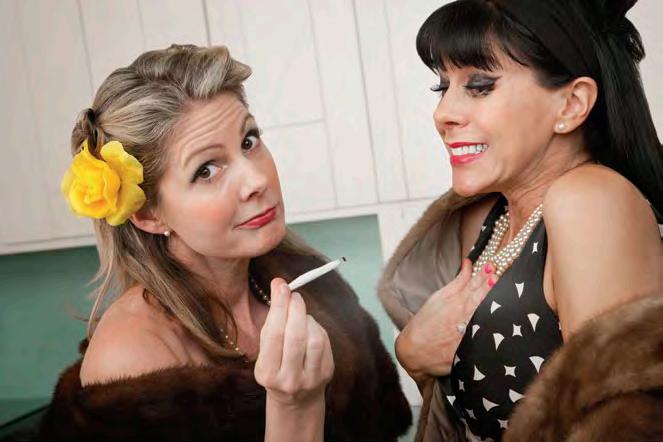
Some big health risks will halve within years if you quit smoking
Within a year of quitting your risk of a smoking-related heart attack is halved, and within ten years your risk of dying from lung cancer halves.
I l Ived In a polluted area. Children’s lungs are more prone to damage from air pollution than an adult’s. One study shows that breathing in polluted air for several years can raise your lung-cancer risk by 25 per cent and be as harmful as passive smoking. But by leading a healthier lifestyle now, you can definitely help ward off disease.
I spent too much tIme In the sun. Nearly 80 per cent of lifetime sun damage occurs before the age of 18. The more sun exposure you had, the more likely you are to have wrinkles, freckles and other skin discolorations later in life. Even
worse is your heightened risk of skin cancer. Plus, your chances of getting melanoma go up by 75 per cent if you used tanning beds before you were 35. You can’t repair that damage, but if you’re more careful from now on about covering up outdoors and using sunscreen, you’ll cut your odds of skin cancer.
I got drunk a lot. Even if your youthful drinking days are behind you, alcohol’s effect on your health could linger on. In one study, former heavy drinkers reported more depression, heart problems, chronic bronchitis and diabetes after the age of 40 than current social drinkers. But there’s no need to give up hope— healthy living helps fix the damage. In one study, former heavy drinkers saw their risk of cancer of the oesophagus drop to normal over a decade.
07•2014 | 59
AS/ALAMY
PHOTO: YAY Medi A
Enjoy Your Picnic…
…but keep unwanted guests, such as salmonella and E. coli, away.
pack…
■ …two coolboxes—one for food and one for drinks. As you’ll probably crack open the drinks more often than the food cooler, this prevents warm air reaching your perishables.
■ …your coolers in an airconditioned car, or at least stuff in plenty of freezer blocks.
aV OID…
■ …bringing anything made with fresh eggs—they’re a breeding ground for bugs.
■ …meat, fish, potatoes and pasta mixed with mayonnaise. While the mayo keeps bacteria at bay, the other foods reduce its acidity and make the little nasties flourish. Bring your salad ingredients in separate pots and mix them on the spot.
Wa S H…
■ …the outer surface of all fruits before cutting them.
■ …your hands before laying out and eating your food. Not always practical when you’re picnicking in deep country, so make sure you bring antibacterial wipes or gel.

Men’s HealTH
Men and women need to keep track of cholesterol, a silent risk factor for heart disease, but men tend to develop it earlier. you’re at risk if you’re inactive, overweight, smoke or eat unhealthily. But thin people can be affected too. The only way to know if you’ve got high cholesterol is with a simple blood test. you should be screened if you’re over 40 or have other risk factors for heart attack or stroke. The aim is to keep your cholesterol below 5mmol/l and your lowdensity lipids (lDl) below 3mmol/l, or two if you have other risk factors. you can knock up to ten per cent off your levels with exercise, diet change and giving up smoking. keep dietary levels below 200mg a day by going easy on fatty foods and munching more fibre and nuts. What else? If lifestyle changes aren’t enough, then it’s statins for you. they sometimes have sideeffects—but bear in mind that for every 1mml/l reduction in lDl, your chances of a heart attack drop 22 per cent.
Healt H Istock.com/patr I ck H eagney | 07•2014 60
HoW’s His cHolesTerol?

Plane and Simple
If you have leg cramps after a long flight (of over four hours), seek medical help. It could be a blood clot, known as a deep-vein thrombosis (DVT). Ignored, the blood clot could travel to your lungs and cause a life-threatening pulmonary embolism (PE). Other possible symptoms are calf swelling, shortness of breath, chest pain, coughing and dizziness. If you have these, don’t hang around—go to A&E. DVT and PE can be treated with blood-thinning medication. But the risk of this kind of post-flight fright is very small and you can do simple things to reduce it further:



Take a single low-dose 75mg aspirin tablet (available from chemists—but don’t get confused with the more usual 300mg dose) half an hour before boarding.
Grab a quick walk up and down the aisle from time to time.
Flex and point your toes while in your seat.
Drink plenty of water, but go easy on the booze.
Healt H IStock.com/ I zu S ek | 07•2014 62
for more, go to readersdigest.co.uk/health





Easy-to-read, easy-to-understand The ‘ALL-YOU-NEED-TO-KNOW’ Guide to Buying Hearing Aids has been specially commissioned to provide you with useful and fact-filled information about the
latest hearing aid solutions to everyday hearing problems.
very
To get your completely FREE copy of the ‘ALL-YOU-NEED-TO-KNOW’ Guide to Buying Hearing Aids call us TODAY on FREEPHONE 0800 488 0106 Please quote ref: CG RD 02 when calling or complete and return the FREEPOST coupon. Our lines are open Monday to Friday 9am-5pm Please note ALL sections below, including your phone number, must be completed to receive your free guide. Mr/Mrs/Miss Address Postcode Telephone/Mobile Number Email Please return (no stamp needed) to: Freepost RTCS-TALL-BHRR, Hearing Information Service, Unit 3 Eastern Wood Road, Plympton, PLYMOUTH, PL7 5ET Worth £3.99! PUT AN END TO YOUR HEARING PROBLEM ✁ “Really useful information and a great help.” D Thomas
to cover with the latest hearing aid solutions to hearing problems and their causes. Get this FREE ‘All-You-Need-To-Know’ Guide to buying Hearing Aids 2014 Please send me my FREE copy of The ‘ALL-YOU-NEED-TO-KNOW’ Guide to Buying Hearing Aids To get your FREE guide to NHS or Private Digital Hearing Aids call us now on FREEPHONE 0800 488 0106 Please quote ref: CG RD 02 when calling. Alternatively, please complete and return this FREEPOST coupon.
Finding
...and
more!
Packed from cover
• How we hear sounds & voices • Hearing problems & their causes • Hearing Aid Features & Functions • An insight into what you should pay • Private or NHS - what do each provide? •
the best Professional Advice FREE of charge
much, much
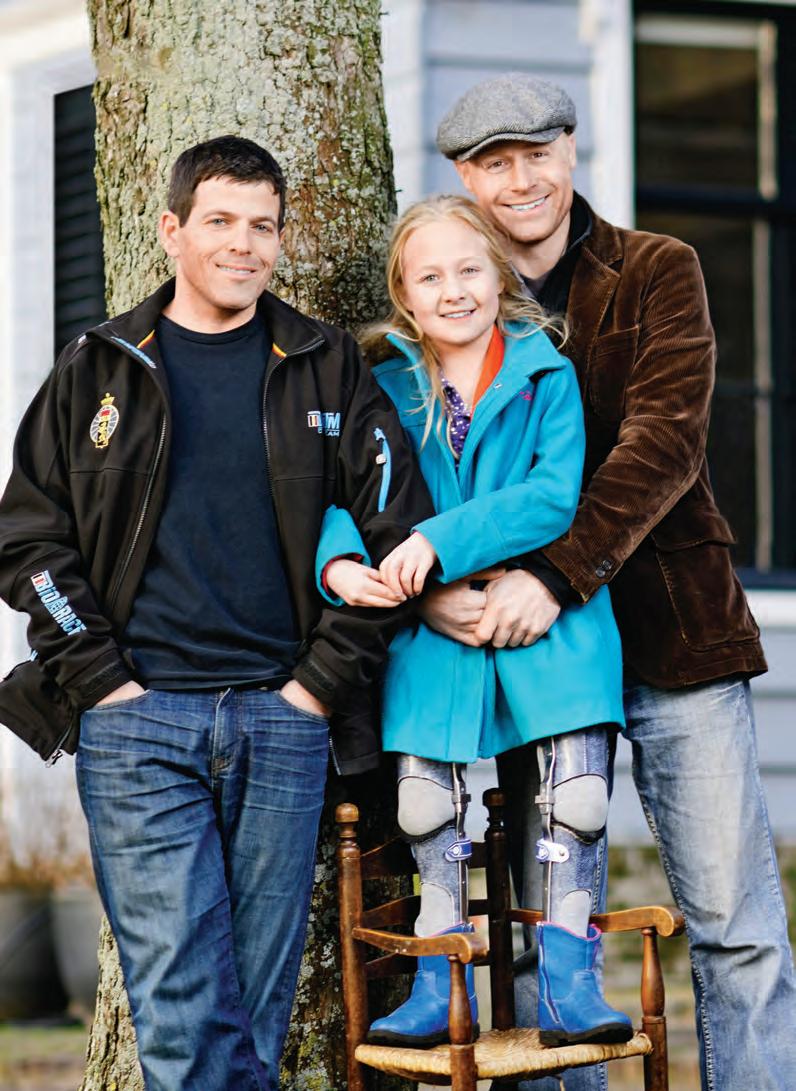 Caring for Bo (middle) and their passion for cycling, brought Dave Berson (left) and Remco Jansen together
Caring for Bo (middle) and their passion for cycling, brought Dave Berson (left) and Remco Jansen together

how an anxious young family from amsterdam found friends for life in philadelphia
By lisa fitterman
Being Bo for
There
65
photo: goffe struiksma/p-i.nl
he email had caught dave Berson’s eye. Like so many internet scams and pleas, the subject line was in bold typeface. “Need your help!” it read. But this one seemed different. Sitting in the chaotic basement office of his home in a suburb north of Philadelphia, Pennsylvania, surrounded by a jumble of cycling jerseys and family photographs —his two passions—he began to read.
It was a late winter morning in March 2011. Within seconds, the 44-year-old corporate recruiter was engrossed. From the email, he learned about Bo Jansen, a brave, bright little Dutch girl whose knee joints were fused at nearly 90 degrees, leaving her legs bent and rigid. She was making the long journey to Philadelphia with her parents and two younger siblings in the hope that surgeries in the city would help her walk for the first time in her young life.
He read that Bo, then aged just six, had been born with arthrogryposis, a congenital condition that affects about one in every 3,000 births. Bo’s specific version was even rarer: one in 10,000. And that she was so determined to become independent, she was already propelling herself across a room on her knees, like a supplicant looking for a miracle.
The email, written by a friend of Bo’s family, stressed that her parents, Nancy
and Remco Jansen, weren’t looking for handouts, but rather someone to give them some advice. Remco had in fact already found work and the couple was fluent in English. But uprooting a family to settle in a strange land for up to a year was daunting, to say the least.
“I’m reaching out to see if we can put some of that wonderful neighbourly spirit into helping them find their way in Philly,” Dave read. “Is anyone out there willing to help form Bo’s ‘dream team’?”
All of a sudden, Dave knew he’d have to be part of that team. He wanted to rally heaven, earth and his community to help this family fit in —and not just because it was the neighbourly thing to do.
His wife Rita often teased him about his kind nature. “If someone calls you at midnight and asks you to come over right away, you’re out of bed and running,” she would say.
T | 07•2014 6666
An avid cyclist who’d competed in Europe in the early 1990s, he knew what it was to be a stranger in a strange land. He had experienced kindness himself—people there had opened their homes to him and helped him navigate new customs, languages and the tricky roundabouts so common on the continent. He’d reciprocated over and again, welcoming European cyclists into his home without question.
But there was more here than just a need to help. Bo’s story touched something deep inside Dave: being the parent of a child—his daughter Hannah, now six—who had faced serious medical problems at birth (something Dave still finds difficult to speak about today) spurred him on.
at least six months abroad in a big, strange city, they had an answer to their cyber cry for help.
Broek is like a step back in time, with narrow streets and low-rise houses painted all colours of the rainbow. It’s a place where everyone knows each other. Bo, with long blonde hair, an open, wide face and radiant smile, had grown up here, confident and comfortable in her wheelchair.
The Jansens didn’T wanT To break up Their family. They needed a home for all of Them
Dave contacted Barbara, his friend who’d forwarded him the email that cried for help.
“I’m in,” he said.
t hat same day in B roek, waterland, a village five miles north of Amsterdam, Nancy Jansen sat at her computer and opened an email. Short, even terse, it read: “Hi, I’m Dave. We’re able to help. Let me know what you need.”
She called Remco, relieved. Reeling from the details involved in planning
Nancy and Remco searched to no avail for a Dutch doctor who could give their daughter the chance to leave her chair. Finally, Nancy learned of Dr Harold Van Bosse, an orthopedic surgeon in Philadelphia who specialised in treating children with arthrogryposis. She sent him Bo’s medical history. In the summer of 2010, he told the couple he’d be in Amsterdam at a conference and would love to see her.
Their meeting took place late in the afternoon. Even though Bo was tired and hungry, she impressed the surgeon by walking on her knees.
“If she can do that, she can walk on her feet,” Van Bosse told Nancy and Remco. They looked at each other, unsure if they’d heard him correctly. But they had.
They didn’t want to break up the family, with one parent going to
Reade R ’s d iges t 07•2014 | 67
accompany Bo while she had several painful procedures to stretch out her joints and for the other to stay with their other children, red-haired Zef and Fay, who wasn’t even two yet. So it was luck that Remco’s job with a multinational firm in Philadelphia as a health consultant meant he was able to bring them all over on his temporary work visa.
Their first need was finding a place to stay, and they sent Dave a picture of a house they were thinking of renting in the north of the city. “Not a good area!” he promptly replied. “Avoid.”
three storeys and a suite on the top floor, for grandparents to stay.
Once the house was found, Dave, Barbara and their friends leapt into action. The first step was to make a wish list, which included beds for the kids, a sofa and “basically everything you use in a kitchen”. They canvassed relatives, friends and colleagues to scour their homes for stuff.
progress
was slow, buT wiTh her legs in brighTly coloured braces, The liTTle girl began To sTand
The Jansens gratefully accepted his offer to accompany an estate agent to other listings that they liked the look of and take pictures that he’d send them, along with his notes about each place. And so began their relationship with the man of very few words and a very big heart.
“Just a cardboard box,” he wrote dismissively of one house. “Too many stairs,” he emailed about another.
Finally, he settled on a place in Jenkintown, a charming commuter community just north of their own Elkins Park, with small shops and restaurants, a town square and a cafe that has the best lattes in the area. Clad in clapboard and stucco, the house had
By mid-May they were so overwhelmed, Dave started to keep spreadsheets. One entry, a sofa and two armchairs, was a gift that came from simply “Jenkintown guy in park”.
When he sent the spreadsheet to Remco and Nancy, they were touched and a bit startled. Dave and this particular community seemed to have a lot of heart.
r emco arrived in the middle of m ay 2011 , several weeks before the rest of the family. Dave met him at the airport, slight, serious and solicitous.
He apologised for not finding a home with a bathroom on the main floor for Bo and worried that the garden, with a huge lawn, was too small.
“Don’t worry,” a somewhat bewildered Remco said as he wandered through each room. “You should see the size of our yard in Broek. It’s a postage stamp.”
Being There For Bo | 07•2014 6868
photos: Courtesy of the Jansen family
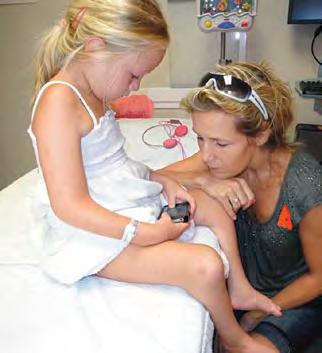


Top: Bo and her mother Nancy wait for their first appointment with Dr Van Bosse. Middle: Bo’s right leg is almost straight. The next surgery would see a frame put on her left leg.
Bottom: Saying thank you and goodbye to Dr Van Bosse
Dave spent time going with him to get all the little extras that would make the home the family’s own. As they shopped, they talked, mostly about cycling. In their emails, they’d already talked about their passion for the sport; when Dave sent a picture so that Remco would recognise him at the airport, the Dutch man wrote back that he looked just like the Spanish professional cyclist Pedro Delgado.
Dave replied: “But shorter.”
It took about a week for Dave to speak to Remco about his daughter Hannah. Although she was OK now, the terror, sense of helplessness and need to protect remained. Dave instinctively understood why Bo was coming here with the rest of the family —and why they were taking this chance. He would have done the same thing for Hannah in a heartbeat. Now Remco understood too. The two men had another point of connection.
On the day the rest of the family arrived, exhausted and laden with suitcases, he was at the airport with Remco to bring them home. When Bo saw her bedroom—the first one she didn’t have to share—her face shone. It was fit for a princess: white and airy,
07•2014 | 69

metal halo with thin, hinged rods, around her right knee; it was held in place by pins that were screwed into her shin and thigh bone. Three times a day Nancy turned a bolt attached to the fixator to tighten it, which straightened the leg out just a bit more.
Sometimes, Bo screamed from the pain. But she persevered, and in October Van Bosse did the same procedure on the left leg. On January 18, 2012, one day before her seventh birthday, the second fixator was taken off. A week later Bo had a physiotherapy appointment at the hospital. She was scared.
“Mum, hold my feet!” she cried at first.
“I love it,” she pronounced. “This house is great.”
Soon, the house was a home. Dave was always available if they needed something—a car for a day, help with drivers’ licences. He’d call to invite the Jansens over for a barbecue. Or to tell them his family was off to the zoo; would they like to come too?
Nancy reached out to hold her daughter, protective, when the physiotherapist manoeuvred her between the parallel bars. Setting to it and gritting her teeth, Bo grasped each bar and whispered, “Mum, go away.”
Nancy retreated a bit.
“Further, Mum. Further!”
Bo’s first surgery, to correct a club foot, was just two weeks after the family landed. A month after that, Van Bosse installed an external “fixator”, a Bo, a friend and little sister Fay—at home in Broek, The Netherlands
And then, Bo walked. It was just a few awkward steps at first, but to Nancy, they were a giant leap forward. She began to cry and called Remco on her mobile. “Bo walked,” she said over and again.
Progress was slow, but with her legs encased in brightly coloured braces, with lots of posters of horses—her favourite animal—caught in mid-run.
| 07•2014 7070
photo: goffe struiksma/p-i.nl
the little girl began to stand on her own. She stood and brushed her teeth, and she’d take little steps to her bed, still a bit bowlegged but able to bend and straighten her knees.
“She’s always had a fierce, determined soul,” Remco told Dave during one of their cycling outings, which they did every Saturday. “It’s wonderful to see her body catching up.”
t hen came the day Bo walked with her mum into Zef’s school to pick him up, and carefully and oh-socasually made her way down a long
hallway. After spotting his sister, Bo’s little brother ran up to her.
“Bo, you’re as tall as me,” he said, dancing around her. “You’re really big!”
Nearly two years later, the Jansens are back in Holland but the two families are still as close as ever. They stay in contact through Facebook and email, and last January Dave visited for the World Cyclocross Championships, which took place in the south of the country, near the Belgian border.
“It’s like we’re family,” he says. “We’re friends for life.”
an even quicker read...
Whizz through your must-read books in no time at all using these potted versions of old classics (as seen at sadanduseless.com):
Hamlet by William shakespeare
hamlet: “Whine, whine, whine...to be or not to be...i’m dead.”
the enD
Inferno by Dante
some woman puts Dante through hell.
the enD
Adventures of Huckleberry Finn by mark twain goes rafting. goes home. the enD
The Old Man and the Sea by ernest hemingway an old man catches a fish that’s too big for his boat. the fish gets eaten by sharks. then he goes home and dies.
the enD
Reade R ’s d iges t 07•2014 | 71
Our judge Barry Marsden selects the very best entries from our readers
Family Photo Competition: The Winners!


Adults winner:
Anna Marriage, 42, from Hertfordshire
This is just one photograph from a huge collection I have of my four children growing up. It was taken with a camera strapped to my husband’s chest.
What our judge said:
There’s no higher praise I can give a photo than to say, “I wish I’d taken it myself.” This image conveys all the joy and spirit of family while also being wonderfully creative and powerfully visual. Brilliant!
inspiration
| 07•2014 7272

Adult runner-up: Chris Evans, 49, from London
This photo was taken on the beach at Wells-next-the-Sea, Norfolk. We’ve been going there as a family for the last six years—the kids always look forward to a traditional holiday with
Adult runner-up: Sarah Ogborn, 27, from Hampshire

This photo was taken by my dad Neil, who enjoys photography as a hobby. This is a picture of my husband and I with our tiny son Micah, who was just six weeks old at this point. We thought it was a simple illustration of the togetherness of family in the early days. Micah is our first child, so life has been somewhat chaotic! But it was lovely to reign in the chaos for a moment and snap this picture. sandy beaches, picnics and ice creams. This shot has our three children and our two godchildren playing in a sand hole on the beach. It took them less time to dig the hole than it would to complete a level of Sonic the Hedgehog, but they had twice as much fun!
07•2014 | 73

Under-18s winner:
Rhiane Cunningham, 17, from Colchester
My grandparents, who read Reader’s Digest every month, saw this competition and passed it on to me. I liked the sound of the brief and decided to give it a go.
I thought up the idea while watching my dog Lucy sit near our boots, wanting to go for a walk. It took quite a few attempts to get her to stay still, but I finally got this shot. I really like this photo because it looks as if my dog is saying, “Can we go for a walk now?”
I knew there would be loads of entries, so to find out I won was amazing!
What our judge said:
This image is clever, funny and emotional in equal measure. To portray a whole family without any of them being in the photograph is a masterstroke, and invites the viewer into the narrative—we feel we know the family from their wellies! And we can tell they’re off camera from the pleading look on the face of the dog. It’s a photo that suggests rather than tells.

Family ph O t O C O mpetiti O n: t he winners!
| 07•2014 7474

Under-18s runner-up: Charlotte Herdman, 12, from Herefordshire
This photograph was taken in February of this year on The Begwyns, near my home in Clyro, Herefordshire. It’s a place my whole family go for walks—it’s beautiful, you can see for miles and I’ve lots of happy memories attached to it.
The photo shows my two younger brothers Dan, aged ten, and Joe, aged seven, jumping over a gorse bush. It’s full of energy and portrays my brothers being wild and free.
Under-18s runner-up: Hope Simpson, 13, from County Durham
This is a photo of me, my mum and dad, my brother Jacob and our dog Alfie. It was taken last Boxing Day and was a selfie on my mobile!
It’s a special picture because it was the first time we’d been able to go out for a walk in over a year—I was recovering from CRPS and had been in a wheelchair. But my family got me through a really tough time.
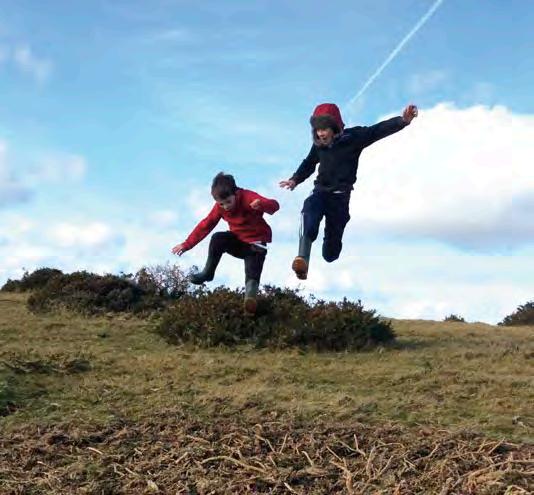
Reade R ’s d igest
07•2014 | 75
Journalist and presenter Esther Rantzen was the face of That’s Life for 21 years and launched ChildLine in 1986, helping children nationwide
If I Ruled the World Esther Rantzen
I’d ensure politicians didn’t make wild claims. They’d have to use the same discipline that research scientists and doctors employ; backing up their arguments with solid factual information that’s transparent and accountable. I’d fine heavily any politician who made statements based on their ignorant prejudice. This would reduce most to total silence—which might be a good thing.
I’d direct scientific effort into sunny days and rain at night. Nature could get on with what it needs to flourish—not blistering sunshine or deluges, everything in moderation—and we’d wake with smiles on our faces. My heart is lifted by the sun.
I’d make children safe. I’d ensure people who abuse or neglect their children were detected early and I’d remove their children from them. I’d also put all paedophiles together on an island where no children would ever set foot and surround it with alligators. People who sexually abuse children aren’t obvious;


| 07•2014 76 inspiration
illustrated by sam falconer
they wear a range of disguises in order to get to their prey. Someone once said to me, “Monsters don’t get near children but nice men do.”
I just want our children protected from them.
We’d find older faces beautiful. Nowadays, we go to ridiculous lengths to erase every line and wrinkle, and in doing so we iron out the stories of our past and degrade older age. Think of Mother Teresa; her face radiated faith, commitment and experience. We should value older people far more and recognise that we can learn from their valuable experience. Many older people— who have been at the centre of their families, relied on in the workplace or community—find that with old age the tide goes out. They’re left stranded and become isolated. One of the obvious ways to help is to provide more appropriate housing; developments tailored for older people so they have the network to support their changing needs.
I’d ban stone cladding on houses and concrete driveways. Stone cladding is simply hideous, and concrete prevents the rain being absorbed into the earth. We seem to have lost the art of making beautiful buildings and it makes me cross. We’re animals that respond to our environment and looking at ugly buildings is depressing.
I’d do away with very high platform heels. The ones where women totter on an artificial ledge so toweringly high they can barely put one foot in front of the other. I’d like women to rediscover what fun it is to walk and run the way God intended.
The media and fashion industry would have a social responsibility. No size-zero models. Of course it’s fun to look at pictures of glamorous people, but not painfully thin ones. At ChildLine we counsel so many children who hate the way they look, and eating disorders have become endemic, particularly among young women who feel they don’t live up to the media’s definition of beauty.
I’d encourage every family to sit down and eat together. We used to have family supper every night where we’d discuss our days and it was a wonderfully valuable time. Now, with screens in every room, we must find ways to bring the family together and encourage young people to share their concerns or celebrate the good things in life. Families are the best kind of support. It would also be a very good thing if we all learned to cook properly. That’s something I’m not very good at myself, but then I’ve been quite busy… As told to Caroline Hutton
Last year Esther launched silverline.org.uk, a helpline for older adults in need.
07•2014 | 77
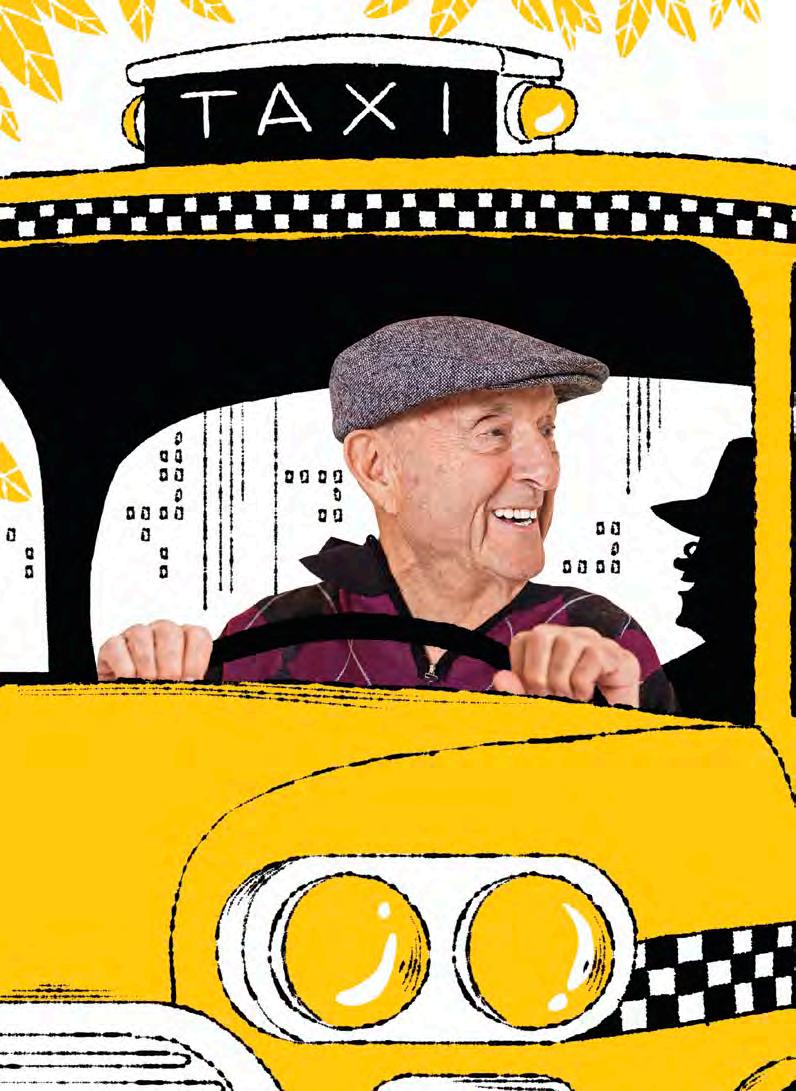

The Stranger Who Changed My Life
A cabbie asked one and transformed simple question his
son’s
future
By Irv I ng stern from New York Newsda Y
07•2014 | 79
I nsp I r at I on
For 28 years, three months and 12 days, I drove a New York City taxi. Now, if you were to ask me what I had for breakfast yesterday, I probably couldn’t tell you. But the memory of one fare is so vivid, I’ll remember it all my days in this world. It was a sunny Monday morning in the spring of 1966. I was cruising down York Avenue looking for a customer, but with the beautiful weather, it was kind of slow. I’d stopped at a light just opposite New York Hospital when I spied a well-dressed man dashing down the hospital steps. He was hailing me.
Just then, the light turned green, the driver behind me honked impatiently and I heard a cop’s whistle. But I wasn’t about to lose this ride. Finally, the man reached the cab and jumped in. “LaGuardia Airport, please,” he said. “And thanks for waiting.”
Good news , I thought. On Monday morning LaGuardia is heaving, and with a little luck I could get back-toback fares. That would make my day.
As always, I wondered about my passenger. Was this guy a talker, a mummy, a newspaper reader? After a few moments, he started a conversation. It began ordinarily enough: “How do you like driving a cab?”
It was a stock question I’d been asked hundreds of times, and I gave him my stock answer. “It’s OK,” I said. “I make a living and meet interesting people sometimes. But if I could get a job making $100 a week more, I’d take it—just like you would.”
His reply intrigued me. “I wouldn’t change jobs if it meant I had to take a rise of $100 a week.”
I’d never heard anyone say such a thing. “What do you do?”
“I’m in the neurology department at New York Hospital.”
I’ve always been curious about people and I’ve tried to learn what I could from them. Many times during long rides, I’d developed a rapport with my passengers, and quite often I’d received good advice from accountants, lawyers and plumbers. Maybe it was that this fellow clearly loved his work; maybe it was just the pleasant mood of a spring morning. But I decided to ask for his help. We weren’t far from the airport now, so I plunged ahead.
“Could I ask a big favour of you?” He didn’t answer. “I have a son, 15, a good kid. He’s doing well in school. We’d like him to go to camp this summer, but he wants a job. But a 15-yearold can’t get hired unless his old man knows someone who owns a business, and I don’t.” I paused. “Is there any possibility that you might get him some kind of a summer job—even if he doesn’t get paid?”
| 07•2014 80 the Str A nger who ch A nged my life
P re V io US SP re A d , P ho to gr AP h of ir V ing S tern by rob ho w A rd i ll US tr A tion S b y e d win fotheringh A m
He still wasn’t talking, and I was starting to feel foolish for bringing up the subject. Finally, as we approached the ramp to the terminal, he said, “Well, the medical students have a summer research project. Maybe he could fit in. Have him send me his school record.”
He fished around in his pocket for a card but couldn’t find one. “Do you have any paper?” he asked.
I tore off a piece of my brown paper lunch bag, and he scribbled something and paid me. It was the last time I ever saw him.
That evening, around the diningroom table with my family, I pulled the scrap from my shirt pocket. “Robbie,” I announced proudly, “this could be a summer job for you.” He read it out loud: “Fred Plum, N.Y. Hosp.”
My wife: “Is he a doctor?”
My daughter: “Is he an apple?”
My son: “Is this a joke?”
After I nagged, cajoled, shouted and finally threatened to cut off his allowance, Robbie sent off his grades the
next morning. The fruit jokes kept coming for a few days, but gradually the incident was forgotten.
t wo weeks later, when I arrived home from work, my son came to me, beaming. He handed me a letter addressed to him on richly embossed paper. The letterhead read “Fred Plum, MD, Neurologist-inChief, New York Hospital.” He was to call Dr Plum’s secretary for an interview at the hospital.
Robbie got the job. After working for two weeks as a volunteer, he was given a paid position, earning $40 a week for the rest of the summer. The white lab coat he wore made him feel a lot more important than he really was as he followed Dr Plum around the hospital, completing minor tasks for him.
The following summer, Robbie worked at the hospital again, but this time he was given more responsibility. As high-school graduation neared, Dr Plum was kind enough to write letters

Maybe it was that this fellow loved his work, or just the pleasant spring morning. But I decided to ask for his help
07•2014 | 81 r eader’s dI ges t
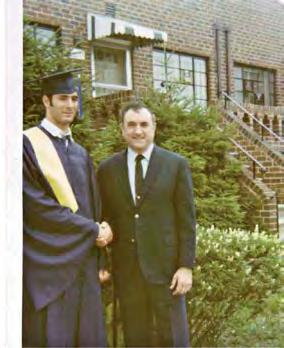




nger who ch A nged my life | 07•2014 82 clockwi S e
to P
c o U r te S y of i r V ing S
Photogr AP h b y r ob h o w A rd c o U r te S y of r ober t Stern
the Str A
from
left:
tern (2).
Clockwise from top left: the future doctor with his dad outside their Brooklyn home, 1966; in his highschool graduation cap and gown, 1969; with his dad last year; and at New York Medical College, 1975
of recommendation for his college applications. Much to our delight, Robbie was accepted at Brown, an Ivy League university.
He worked at the hospital for a third summer and gradually developed a love of the medical profession. Robbie applied to medical school—and Dr Plum again wrote letters attesting to his ability and character.
Robbie was admitted to New York Medical College and, after his medical degree, did a four-year residency specialising in obstetrics and gynaecology.
Dr Robert Stern, the son of a New York taxi driver, became OB-GYN chief
resident at Columbia-Presbyterian Medical Centre.
Some might call it fate, and I guess it was. But it shows you that life’s opportunities can come out of the most ordinary of encounters—even something as simple as a taxi ride.
Irving stern, 93, still lives in Brooklyn. robbie—now dr robert stern—and dr Plum exchanged Christmas cards every year until Plum’s death in 2010. dr stern is currently a specialist in new york. his son is a cardiologist; his daughters are an endodontist and a lawyer. “this may all be due to dr Fred Plum, whom I’ll never forget,” he says.
© 1991 by i rV ing Stern. New York Newsda Y (AU g USt 8, 1991), newS dAy.com.
common-sense end I ngs to class I c jokes
What do you call a man with a shovel on his head? well, deranged, obviously. it’s much easier to carry it in your hand.
“my wife went to the West Indies.” “Jamaica?” “no, Saint lucia.”
What do you call a dinosaur with no eyes? Unfortunate.
What do you get when you cross a sheep with a kangaroo? don’t be ridiculous, they’re completely different species— the chances of successful reproduction are zero.
What’s Bob marley’s favourite doughnut?
Just plain with sugar. a man walked into a bar. fortunately, it didn’t hurt at all.
What do you get if you pour boiling water into a rabbit hole? A visit from the rSPcA. from Ilxor.com
07•2014 | 83 r eader’s dI ges t

In the latest Budget announcement, the Chancellor made a series of changes to the way people draw their pension. A move that was designed to simplify retirement has only served to highlight the reality that many retired people in Britain face.
Turning your property into a pension
On average, you can expect your income to drop by 40% when you retire and this isn’t helped by record low annuity rates. It’s not all doom and gloom as most people’s largest asset continues to grow in value. For many, the family home is their best performing asset and one that shows no sign of slowing down.
According to the authoritative Nationwide House Price Index, property has increased in value by 500.25% in the last 30 years.
You only need to look at the pension industry to see how remarkable that growth has been. In 1995, a pension could have bought an income for life of £11,380 per year whereas the same pension now would get just £4,920 per year.
That pensions were at the heart of the Chancellor’s budget highlights how much needed to be done. It’s no wonder that the equity release market grew by 36% this year as more people wisely look to their property, not their pension, to fund their retirement ambitions.
Your property is no longer just a place to call home and is now a utilisable asset that you can use to your advantage. Usually, you would have to sell up and downsize to take advantage of this well performing asset, but with equity release you continue to own your home, are able to live in it, and can access some of the equity that has been building up over the years.
Retirement provides you with the time to enjoy the valuable things in life, such as spending more time with and treating family, crossing those must-see places off the list, realising those ambitious home improvement projects and taking up hobbies.
To make sure your finances match your ambitions in a world where the pension goalposts keep changing, we have decided to produce a guide to raising tax-free capital from your home through equity release. To do so, we have partnered with Retiredom, a leading equity release specialist, to provide the most relevant, factual information. The guide will show you how you can safely access the funds tied up in your property to help you live the retirement you hoped for.
It will show you how equity release has consumer safeguards built in, how equity release is regulated by the Financial Conduct Authority, how much you are able to release and provide answers to your frequently asked questions.
To request your free copy, call 0808 231 1968 or visit readersdigest.retiredom.com
The service is provided by Retiredom, a trading style of Responsible Life Limited, which is authorised and regulated by the Financial Conduct Authority.
A lifetime mortgage may reduce the value of your estate and will affect your entitlement to state benefits. To understand the features and risks ask for a personalised illustration.
Retiredom provides initial advice at no cost and no obligation. Only if you choose to proceed and your case completes, Retiredom charges a fee for advice: the precise amount will depend on individual circumstances but is estimated at1.6% of the amount you release.

Magical Menorca
This tiny, tranquil Spanish island was my antidote to frenzied city life
By Lia Grain G er
trave L & ad venture

87
Just one of the friendly faces on the pretty island; (left) the fishing village of Binibequer Vell
A knot of AnticipAtion bubbled in my chest as I wound down the amber-bathed road. Golden fields punctuated by wild olive trees tumbled down to an endless sea, with not a human in sight. Warm air brushed my hair across my face. I closed my eyes.
I’d touched down earlier that day on the tiny Spanish island of Menorca, the little sister of Mallorca to the south-west. Yet, as the serene landscape flew by, a wave of anxiety overcame me.
An admittedly gregarious city dweller, I’m most in my element on buzzing thoroughfares and in boisterous bars, making conversation with vivacious strangers. But it had been a frenzied year and I’d decided I needed some stillness.
From what I’d heard, this speck of earth in the Balearic Sea was home to ageing Catalan fishermen, a smattering of British retirees and few others. Its status as a Unesco biosphere reserve means that it’s protected from major development. I’d also heard it would be easy to find myself devoid of human company, with only the animals and insects for companionship—on a sandy beach, a windswept bluff or a deserted winding country road.
t he e A rl y mA y morning h A d brought with it cle Ar skies—the norm for about 225 days a year here. My plan for my first day was to rent a mountain bike and tour sections of the Camí de Cavalls, or “Path of Horses”, a 115-mile ancient trail originally used for military patrols. I grabbed a bike for ten euros in San Lluís, one of the island’s few inland towns.
I’d managed to arrive when all the wildflowers were in bloom
The chatty shop lady who took my tenner applauded my timing, for I’d managed to arrive when every wildflower on the island seemed to bloom at once. The morning ride was accented with the aroma of, first, clusters of violet stinging nettle, then bursts of red Indian paintbrush and finally tiny orange scarlet pimpernels.
I paused at the side of just such a road, dust in my sandals and the smell of wild gladioli sweetening the air. So far, the rumours were true.
Suddenly I smelled the sea and, cresting a hill, spied Sa Mesquida, a whitewashed cluster of fishermen’s homes crowned by a 200-year-old British defense tower. The landscape was tidily divided by low-lying white stone walls that date as far back as the 14th century. I’d hop off my bike every few hundred yards and open the island’s trademark hand-carved
| 07•2014 88 pho T o S prEviou S p ag E : (l E f T ) g ETT y ima g ES ; (righ T ) l ourd ES S E gad E ; ( T hi S p ag E ) g ETT y ima g ES
m agical mE norca

wooden gates that allow shepherds and quiet tourists like myself to pass from one plot to the next.
t o s Ay i p ed A ll ed the c A mí d e cAvA ll s is A st retch, for the route was decidedly less cyclist friendly than my guidebook had promised. When I wasn’t flying screaming down treacherous slopes, I was pushing my bike up dramatic inclines. It was with great relief that I approached the coastal fishing village of Es Grau.
Lunch was a comically generous helping of freshly grilled cuttlefish and lemon at the harbour-front eatery Es Moll, where I shared the restaurant’s patio with a table of townsfolk sipping tiny bottles of Estrella beer. As I ate, several locals made a Laurel and Hardy-esque attempt to get their worn fishing boat in the water, a scene I imagined to be typical Menorcan entertainment.
Here and there, the landscape was interrupted by a crumbling stone structure or a towering pile of white rocks, for Menorca is littered with archaeological remains. I nearly rode into a 4,000-year-old watchtower standing peacefully unprotected in a wild meadow, and realised that in my short ride I’d already encountered the edifices of almost half a dozen societies spanning several millennia.
The island’s mixed architecture hints at its turbulent history
The island’s motley assortment of architecture hints at a turbulent history. Originally colonised by the Greeks, Menorca was subsequently occupied by the Romans, Moors, Turks, Brits and French, with periods of Spanish rule in the mix. Though Spain finally got its little island back for good in 1802, foreign influences are still evident in the people, the cuisine and, surprisingly, the horses.
The afternoon’s ride was mercifully gentler. I passed through the island’s most strictly protected zone, the Parc Natural de S’Albufera des Grau, where I observed a lagoon erupting with birdsong, a thick forest of towering pines and a beach covered in strange tape-like seaweed with whitened logs poking out like dinosaur bones.
i c A me A c ross just such A b e A st on my bike ride—a sleek muscular stallion with a shining black coat. He was a coveted Cavall Menorquí, a breed whose lineage reveals Arabic, Spanish and British roots. As he stretched his neck over the fence, I laid my hand on my new friend’s smooth forehead and, realising I’d barely spoken the entire day, silently watched the sun go down over the deserted spring countryside.
| 07•2014 90 pho T o: g ETT y ima g ES m agical mE norca
t h At evening i h A d A wA nde r in mA hon , the archipelago’s most south-easterly city and the island’s capital. In search of libations, I ducked into a local tapas haunt, Can Vermut. “What should I have?” I enquired, to which the barman, tickled at having his opinion solicited, replied with gusto, “Pomada!” and promptly filled a large tumbler with lemonade and several shots of Xoriguer, the famous Menorcan gin brewed right there in the harbour—another vestige of British occupation.
It was the cadence of my own language that drew me to a port-side restaurant called Nikki’s in the neighbouring town of Es Castell. Ducking in, I was greeted by the proprietor herself, an imposing British woman with an inviting smile who had arrived in 1974 and, like many other Brits, found it a perfect retreat and never looked back (Lord Horatio Nelson is rumoured to have decamped to Mahon with his married lover, Lady Emma Hamilton, to escape the prying eyes of London gossips).

r eader’s d i G es t
Cala Macarelleta, a popular island beach
“When we started there were no taxes, no books, no till—there wasn’t even a menu,” said Nicky, her eyes glazing over at the memory. “It was so relaxed, so laid back.”
Things still seemed pretty mellow in the little white-walled tavern. Spanish and British customers chatted like old friends, and our gracious host seemed to greet everyone by name.
hAving tA ckle d the south-e A st of the isl And, I was ready to explore the rolling hinterlands that stretched the 29 miles between the island’s coasts. I’d signed up for a country ride led by 25-year-old cheese farmer and trail guide Raquel Manresa Raquel, an au naturel beauty hailing from Manresa, north of Barcelona, with rough hands and a gentle smile. She led me to Bruc—the biggest and darkest of several horses in the stables.
“Can you get on?” asked Raquel, and we were off, trotting through wheat fields that undulated like ocean swells.
Raquel’s charmingly unpolished approach to tourism seemed to be the status quo on Menorca, and it got me wondering how the island maintained such a relaxed and almost flippant regard for foreign holiday cash.
That evening in an empty pizza restaurant in the tiny cove-side town of Biniancolla, I got my answer—from a 66-year-old Menorcan fisherman and construction worker named Lito. He didn’t say much, but with some prodding let me in on the secret of

their little paradise’s preservation: an incongruous trifecta of leather sandals, cheese and costume jewellery.
Before the tourist boom in the 1950s and 1960s, the island already had a healthy economy producing these three commodities for mainland Spain. So when, as Lito put it, “the girls in bikinis came”, Menorca wasn’t salivating for tourist money. Instead, Menorcans passed a series of laws that protected the island and forbade major touristic development.
“It’s still virgin land,” said Lito of much of the island’s protected areas. “I don’t want any more urbanisation,” he continued, gazing out at the dark, glassy cove he’s called home for his entire life. “It’s fine the way it is.”
It was hard to disagree—I’d been enjoying my escape from urbanity immensely. Yet by my final day on the island, I was craving a little civilisation, and I found it on Menorca’s most westerly point.
m agical mE norca 92 | 07•2014
pho T o: a T lan T id E p ho T o T ra v E l/ c orbi S
The port town of Ciutadella was the island capital until 1722
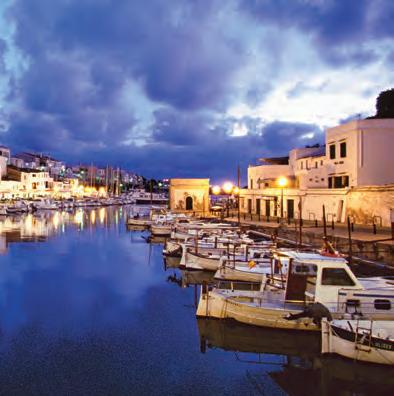
While Mahon may be the port of arrival for visitors today, the cobbled streets of Ciutadella are more often the destination. Founded by the Carthaginians and already the seat of a bishop by the fourth century AD, the city was the capital of the island until 1722, when British conquerors moved it to Mahon. There are no cars allowed in the centre, so I strolled with other Saturday wanderers past the 13thcentury Gothic cathedral and a smaller but no less splendid Baroque church.
Shops offered a range of local treats: impossibly light and flakey Ensaimada pastries, wheels of tangy Mahon cheese and Menorcan ice cream in novel flavours. By the water,
the town’s port was lazily upscale. Brits dined at pricey seafood spots, happy to bask in the afternoon sun.
t h At evening, i m A de my wAy b y bike to Morvedra Nou, a 17-room agroturismo four miles out of town. These handsome rural hotels dot the island, often housed in farms and manors that blend seamlessly with the landscape. Mine had a pool, an elegant restaurant and a splendid room with doors opening to a private terrace.
Retreating there solo with a glass of wine, I realised it was a Saturday night, and that I couldn’t have been more alone. As I was gazing upwards, a flash of bright white flittered across the darkness. At first alarmed, I swung around, straining my eyes at the starlit sky. Was it a bird? Suddenly it made another low pass: an enormous owl, ivory wings spread, two round, searching eyes gazing down at me, through me. And then the night creature was gone, disappeared into the cool darkness.
I leaned back in my chair and soaked in the odd, magical quality of the island, where I was so free of the hustle and bustle of everyday life, and yet in such spectacular company.
rock-so L id advice
“family is the most important thing in the world. So don’t take them for granite.”
a dvice therapy on twitter, via dai L yed G e.ie
Reade R ’s d igest 07•2014 | 93


Happy Valley
Sarah Lancashire stars as police sergeant Catherine Cawood. She is the sergeant on duty when flustered and nervous accountant Kevin Weatherill comes into her West Yorkshire police station to report a crime.
139876
2 DVDs Cert 15 £19.99 £17.79






Our Friends in the North
Christopher Eccleston, Mark Strong, Gina McKee and Daniel Craig star in one of the BBC’s most powerful and unforgettable contemporary dramas, an epic nine-part BAFTA award-winning series following the lives of four friends from Newcastle across four decades from 1963 to 1995. Against the background of an ever-changing Britain, the lives of these four very different people become progressively more entangled. 10hrs 29. Subtitles
132331
3 DVDs Cert 15 £29.99 £14.99


The Count of Monte Cristo –Complete
The lavish BBC costume drama, based on Alexandre Dumas’ classic novel set in the early 1800s, sees Alan Badel leading a distinguished cast in the greatest tale of betrayal, adventure, romance and revenge the world has ever known. 5hrs
139238
2 DVDs Cert U £19.99 £14.99

FIRST TIME EVER ON DVD
Generation War
Valour, courage, and betrayal come to the fore in this remarkable epic that shows the everyday realities of wartime life from a deeply personal perspective. Billed as a German Band of Brothers this TV event vividly depicts the lives of five young German friends forced to navigate the unconscionable moral compromises of life under Hitler. 4hrs 34. Subtitles
138847
2 DVDs Cert 15 £19.99 £17.79

Sho
Full range of DVDs available at shop.readersdigest.co.uk
The Winds of War
Herman Wouk’s best selling historical epic follows a U.S. Naval officer (Robert Mitchum) and his extended family around the world as they are caught up in the tumultuous events of WWII. Gripping, spectacular and filmed on location in six different countries, The Winds of War co-stars Ali McGraw, John Houseman, Polly Bergen, David Dukes and Ralph Bellamy. 14hrs
131376
6 DVDs Cert 12 £34.99 £11.99
Centennial

Richard Chamberlain and Lynn Redgrave lead an all-star cast in this Emmy-winning epic journey into the history of the Wild West. Based on James Michener’s bestseller, the series follows the citizens of a Colarado town from the Civil War to the Great Depression. 20hrs 48. Subtitles
134816
6 DVDs Cert 15 £34.99 £17.79

37 Days –The Countdown to World War I
Ian McDiarmid and Tim Piggott-Smith head up this threepart political thriller, following the catastrophic chain of events which led from the assassination of Archduke Franz Ferdinand on 28 June 1914, to the declaration of war. 3hrs
139698
DVD Cert 15 £19.99 £17.79

The Complete Secret Army
This award-winning BBC series, starring Jan Francis and Bernard Hepton, is a gripping and authentic portrayal of the war waged by one group of Belgian resistance fighters against German occupation during WWII. Many of is storylines were taken from real life events.
38hrs
132588
12 DVDs Cert 12 £74.99 £39.99

ORDER NOW!
332 8080 Open: 8am-8pm Mon-Fri and 9am-5pm Sat-Sun OR, cOmplEtE thE ORDER fORm accOmpaNYiNg OuR RaNgE Of cDs ON pagE 117 For our complete range of products visit shop.readersdigest.co.uk Quote RDP004 for your FREE delivery QuoteDELIVERY!FREE RDP004
0844

The Sinking Of Th e hM S B OunTy
An iconic tall ship sails into Hurricane Sandy—with deadly results
By Nick Heil
96 travel & adve N tur e
 Hurricane Sandy whipped up seas that swamped HMS Bounty. This Coast Guard photo of the submerged ship was shot the morning after
Hurricane Sandy whipped up seas that swamped HMS Bounty. This Coast Guard photo of the submerged ship was shot the morning after
Lieutenant Wes Mcintosh of the uS coast guard was watching a football game on television with his seven-man flight crew around 9.30pm on a Sunday in late october 2012 when his phone rang. it was the coast guard command centre alerting him that they’d received a call from the owner of the tall ship HMS Bounty. The ship, located in the Atlantic ocean off the coast of north carolina, was taking on water, had lost all power and was requesting assistance. By 11pm, Mcintosh was airborne in his turbo prop plane heading east, into Hurricane Sandy.
Locating the ship on radar would be impossible in such rough weather. McIntosh and his co-pilot Mike Myers pulled on night-vision goggles. The sky was clear, a full moon above them, but directly ahead McIntosh could see a wall of dark clouds rising from the water to 7,000 feet.
They approached just above the clouds but were unable to see down to the ocean surface. McIntosh lowered the plane into the storm. The plane lurched and shook violently. Hard rain pelted the windshield. McIntosh wrestled the controls, guiding the plane lower until the clouds shredded and revealed a churning black ocean.
They circled.
“Anything?” McIntosh asked.
Myers sat back in his seat and said, “There’s a pirate ship in the middle of a hurricane.”
t he HMS Bounty was one of the wor L d’ s most recognisable ships. Built in 1960 for the MGM film Mutiny on the Bounty , she was a scaled-up replica of the 1784 original
on which Fletcher Christian led the revolt against Captain William Bligh. The modern Bounty was a classic tall ship. Its three masts rose more than 100 feet, supporting 10,000 square feet of sailcloth and laced with more than two miles of line. She was 120-feet long—30 feet longer than the original —and built of hand-hewn Douglas fir, oak and spruce.
In recent years, however, the ship had fallen into disrepair; she was plagued with dry rot and leaks, and her owner had struggled to keep up with the expensive maintenance. Tired and sagging from 50 years of sailing and dock tours, the ship had been for sale since 2010, but no one was buying. Its crew was now sailing from New London, Connecticut, to St Petersburg, Florida, to entice possible buyers.
The Bounty left New London on Thursday, October 25, with a crew of 16, ranging from first-time volunteers to career boatmen. Three, including Robin Walbridge, 63, were licenced captains. Another four were Merchant Marine-certified able-bodied seamen.
| 07•2014 98 T H e S inking of TH e HMS Boun T y MA p B y: 5w infogr A p H ic S
The rest were new to the ship, either entry-level hires or volunteers. The most recent addition was Claudene Christian, 42, a professional singer and beauty queen from California who claimed to be a descendent of Fletcher Christian himself.
Captain Walbridge was soft-spoken and gravel-voiced, wore wire-rimmed glasses and hearing aids, and bound his flyaway grey hair in a short ponytail. Hired by the ship’s owner in 1995, Walbridge had helmed hundreds of voyages on Bounty up and down the Atlantic coast, in all kinds of weather, including at least two serious tropical storms.
Walbridge was thought of as a good sailor, but he was also considered something of a cowboy. A few weeks before Bounty departed New London, he’d told an interviewer, “We chase hurricanes…you can get a good ride out of them.”
Before they left port, Walbridge gathered the crew on deck and informed them that there was a large storm off the coast. He believed they could safely skirt it, but they’d likely be encountering rough seas along the way. Anyone who wasn’t comfortable with this was free to leave. The next day, Bounty departed under clear skies and light winds, with all 16 crew in tow. The mood on board was cheerful. Walbridge had said he expected the trip to take 14 days.


A deadly collision course: as the HMS Bounty sailed south from New London, Connecticut, Hurricane Sandy travelled up the east coast, gaining force. The two met off the coast of North Carolina. Top: the Bounty in full regalia on calmer seas
a s darkness fe LL on s unday
evening, however, Bounty sailed into one of the worst storms ever recorded in the Atlantic. Dubbed Superstorm Sandy, it stretched nearly 1,000 miles
r eader’s d iges t 07•2014 | 99 p H o T ogr A p H : M A rk Dunc A n / A p pH o T o
oct
oct
oct
oct 28
unite D s
e s
HMS Bounty’s
path
oct 25 Departs from new London, connecticut oct 29 Bounty located by coast Guard
27
28
27
oct 26 sandy’s path
tat
across. Out at sea off the coast of North Carolina, winds gusted at more than 80 miles an hour.
Earlier that day, a gust had ripped the ship’s forecourse, one of its 16 sails and the only one that could be used for stability in storms. The damage required a daring operation to scale the mast and stow the sheet. As daylight faded, conditions deteriorated. Five feet of water sloshed around the engine room. Eventually, the generators and engines gave out entirely, leaving only the ghostly glow of the emergency lights.
Below decks, Walbridge made his way to the communications room. He moved gingerly; earlier, a powerful wave had thrown him across the cabin, severely injuring his back. He took a seat with Doug Faunt, 66, a volunteer who helped with general engineering work. The storm had rendered their mobile and satellite phones useless. In the dim light, Walbridge and Faunt hunched over a makeshift transmitter, tapping out an email message with their coordinates, praying it would reach someone on shore.
giant masts listing at 45 degrees. On the aircraft, the mission system officer radioed down to the ship on the emergency channel.
The response was instantaneous: “This is HMS Bounty. We read you loud and clear!” It was John Svendsen, 41, the first mate. In short exchanges, Svendsen briefed the rescue crew on the situation. Bounty was still taking on water at a foot an hour, but he felt they could hang on until daylight.
The waTer was coming in fasTer, aT Two feeT per hour. iT was Too rough To sTand up on deck
McIntosh had hoped to drop back-up pumps to the vessel, but conditions were too dangerous to get close enough. Periodically, McIntosh climbed above the worst weather, providing temporary breaks from the nauseating turbulence. Then he would circle back down into the maelstrom for updates.
i n the skies above, McIntosh banked hard, looking down on a sight unlike anything he’d ever seen. Below was the Bounty ’s hulking shadow, its
As the early hours of Monday morning dragged on, Walbridge positioned himself at the Bounty ’s helm, leaving Svendsen to communicate with the plane. Svendsen told McIntosh they were planning an orderly evacuation at daybreak. Around 3am, Walbridge and Svendsen directed the crew to the stern and briefed them on the plan.
“No one panicked,” Dan Cleveland, the third mate, recalled later. “The
| 07•2014 100 T H e S inking of TH e HMS Boun T y
mood was calm, professional. I was really impressed.”
for the ne X t ho ur , the crew tended to tasks—gathering their “Gumby suits” (bright red, neoprene survival suits) and assembling supplies for the life rafts—or tried to find a place to rest, survival suits at the ready. Claudene Christian tended to injured crew member Adam Prokosh, 27, helping him move to the high side of the ship.
By 4am , Walbridge told the crew to put on the suits. They would depart from the rear of the ship at first light. The water was coming in faster, at around two feet an hour, and the bow was now submerged. It was too rough to stand up on deck, so the crew crawled along the boards on their hands and knees. Those who didn’t have a task to complete simply clung to fixed objects.
Around 4.30 that morning, Bounty was broadsided by a massive wave that rolled her 90 degrees. Several crew members were tossed into the sea. Some slid across the soaked deck, hitting the low rail and toppling into the water. Others, fearing the ship was capsizing completely, jumped from their perches into the ocean. Bounty now lay on her side, masts in the water, surrounded by a web of tangled rigging.
First mate Svendsen was near the radio and grabbed the handset. “We’re abandoning ship now!” he shouted into the mic.

“To be the captain of the Bounty is one of the greatest jobs in the world,” Robin Walbridge once said
The message crackled over the intercom on board the Coast Guard plane, still circling above. The plane’s radio operator repeatedly called back but continued to be greeted by silence. McIntosh flew towards the water. He could see the Bounty foundering and lights in the water: the strobes on the survival suits.
The situation was now most critical, though the full extent was unknown. Were there survivors? Was anyone still on board, trapped below?
McIntosh circled again. Despite their battered condition, the crew opened the rear door and dropped two rafts down into the hammering wind. They could only hope they would land close enough to the ship to be of use.
r eader’s d iges t 07•2014 | 101 p H o T ogr A p H : J AS on w erling/ A p p H o T o
no sooner had they depLoyed the rafts than the aircraft’s fuel light flashed on the dash, indicating they had to head back to base right away. McIntosh veered away from ship while his radio operator continued to try to hail the Bounty. They were still getting no response.
Treading in frothing water, John Svendsen floated amid the wreckage next to the ship. The Bounty was lost and he needed to get away from the sinking carcass as fast as possible. The water surrounding the ship was now a deadly mess of rigging, loose boards and detritus from the ship. With each wave pulse, the masts would lurch back up to 45 degrees. Then they would crash back into the water, sink under the surface and repeat the cycle.
had no grip, so the safety line slid right through his palm.
n ot far away, second mate Matt Saunders, 37, clung to a wooden grate with six other survivors. One of the Coast Guard rafts drifted nearby, but they couldn’t catch it. Soon, however, they found one of the life-raft canisters and inflated it. They clambered inside, pushing and pulling one another until they were all aboard.
The enTire crew was now in The waTer, swimming and Thrashing amid The huge swells and breaking waves
The entire crew was now in the water, swimming and thrashing amid the huge swells and breaking waves. As the ship slowly sank, she pulled everything down with her, so the only safe course was to try to get away from the wreck. The emergency suits made every move difficult. Water leaked inside the boots, weighting them down. Dan Cleveland reached out to grab a raft that was floating past him but couldn’t reach it. The built-in gloves
Six more crew members sat inside a second raft. Meanwhile, first mate John Svendsen was drifting out to sea, clinging to a floating signal beacon. Later, he would credit Walbridge for saving his life; it was the captain’s idea to pack the buoys as standard equipment. But where was Walbridge himself? And where was Claudene Christian, last seen on deck as the ship tipped into the sea?
With no way to communicate, neither raft, nor Svendsen, alone out in the waves, knew the fate of their shipmates. At last, four Coast Guard helicopters arrived on the scene, the sound of the propellers echoing above the din of the storm.
Dawn’s light filtered into the eastern sky as Coast Guard rescue swimmer
| 07•2014 102 T H e S inking of TH e HMS Boun T y
Randy Haba was lowered from a hovering chopper into the towering waves. After a short swim, he reached Svendsen, who had now drifted half a mile from the wreckage. The first mate was battered and exhausted; he’d smashed his right hand on the ship, rendering it useless, and had swallowed seawater.
Haba slung Svendsen into a harness and got him safely on board the chopper. Then the rescue crew moved to the first raft. The Bounty survivors had heard the rotors and realised help was at hand. But it was still a shock when Haba’s head popped through the raft door.
“I bet you guys are ready to get out of here,” said the swimmer, flashing them a smile. A second rescue swimmer helped survivors from the crew’s other raft on board a second helicopter.


In all, 14 survivors, ranging in age from 20 to 66, staggered off the choppers onto the tarmac at the Elizabeth City, North Carolina, air base—shaken but alive. Reporters waited for them, along with some bad news: another rescue crew had found Claudene Christian unconscious several hours later. Despite efforts to revive her, she didn’t survive.
Sandy had flooded towns from Maine to Florida, causing 147 deaths
and widespread flooding. During the next three days, after the waters calmed, the Coast Guard search continued for Walbridge, but no sign of the captain was ever found.
“Losing two people was tough, but when we saw the survivors getting out of the helicopter on TV, we were overjoyed,” recalls Wes McIntosh. “And even though we didn’t meet any of the crew personally, you go through something like that together and it feels like they’re family.”
r eader’s d iges t 07•2014 | 103
p H o T ogr A p HS : fro M T op: reu T er S. p e T er p A r S on S / A p p H o T o
The body of Claudene Christian (left) was recovered about eight miles from where the ship sank. Above: Coast Guard workers assist Bounty crewman Adam Prokosh
The mediaeval town of Yvoire was a highlight for Dorothy Haworth (inset)
By kate pettifer
My Great Escape: Stepping Back in Time

Reader Dorothy Haworth from Lancashire took a trip down memory lane to Faverges in France’s Haute-Savoie

Kate has driven huskies in the Arctic, sailed the Atlantic and swum with penguins in Devon.
Tell us about your favourite holiday (send a photo too) and if we include it on this page we’ll pay you £50. Go to readersdigest. co.uk/contact-us

When I Was a g Irl In 1954, I went with a school party to the town of Faverges in the Haute-Savoie, France. In July 2010, my daughter Carol and her partner offered to take me back to the area for a long weekend. We stayed at Les Grillons, a delightful hotel in the picturesque town of Talloires on Lake Annecy. It was a real pleasure exploring this popular resort with its ancient buildings and lovely mountain scenery. I particularly remember a baker’s shop with an incredible display in the window of delicious cakes to die for.
The next day we motored to Faverges and I reminisced as we roamed the streets and visited the hotel where I’d stayed and the church I’d wandered into with my friends on Easter Sunday morning (it was so packed, we could only find room to stand at the back). This is the area where the British spy Odette Hallowes worked during the Second World War, and indeed the wireless operator of the Spindle network, to which Odette belonged, was based in Faverges.
Another highlight of the holiday was a visit to the lovely old town of Annecy (pictured right), with its narrow streets,
travel & adventure | 07•2014 104
cosy restaurants and a canal that has the Palais de l’Isle in the centre— once a prison, now housing the local history museum. This was a treat I missed in 1954, opting to go walking in the hills around Faverges instead.
On the way to Geneva airport, on our final day, we called at Yvoire, a mediaeval village dating from the 14th century. This has to be the most interesting, exquisite and colourful place I’ve ever seen. Beautiful flowers, wisteria and geraniums were everywhere, virtually covering the stone houses and tumbling from wooden balconies. Alas, our time there was too short—we had a plane to catch—but it was the final touch to a perfect short break, with ideal sunny weather thrown in!
■ easyjet Holidays (0843 104 1000; easyjet.com/holidays) has threenight stays, with b&b, at the Mercure City Centre, Annecy from £186 per person, including return flights from Southend to Geneva. To find out more about Haute Savoie, visit savoie-montblanc.com/en


Amalfi, Le Marche, the Tuscan Riviera—Italy’s coastline is much celebrated, but now a new book Wild Swimming Italy reveals some of its inland treasures for water babies—river beaches, plunge pools, hot springs and waterfalls where you can simply turn up and dip. Take Cavagrande del Cassibile in Sicily: here, in the south of the island, inland from Syracuse, the river has carved a deep canyon, punctuated by three large pools, stepped with waterfalls. In summer, its terraces can become crowded, so head upstream to the upper pools for a quieter swim.
■ FoR sicily Holidays, try Long Travel (01694 722 193, long-travel. co.uk) or Sardatur (020 8940 8399, sardatur-holidays.co.uk). Wild Swimming Italy is published by Wild Things Publishing at £16.99, including p&p (wildthingspublishing.com).
07•2014 | 105 Reade R ’s d igest
Avola Pools, Cavagrande del Cassible, Sicily
postcard from… s I c ILY
Courtesy of Dorothy h aworth
The holiday group in Annecy
Things to Do This Month
GO NOW
A FANTASTIC MATCH FOR BOREDOMPRONE OLDER KIDS, activitiesabroad. com has introduced three new family holidays—two to Croatia and a third to a magical, little-known area in central Greece. Meteora is recognised by Unesco for its wealth of hilltop monasteries. Bike the trails once used by monks, take a hike, try canyoning and canoeing. From £845pp for seven nights’ b&b, including flights but not activities (01670 789 991).
STAY NOW
THE ROYAL
HORTICULTURAL SOCIETY puts on its annual greenfingered extravaganzas at Tatton Park in Cheshire (July 23–27) and Surrey’s Hampton Court Palace (July 8–13). At the latter, snap up nursery plants and mouthwatering produce in the Growing Tastes marquee. Tatton follows a similar format, with the addition of colourful parades and a ferris wheel for added carnival vibe. Book tickets for both at rhs.org.uk


BOOK NOW
A NEW ROYAL CARIBBEAN

SHIP, Anthem of the Seas, arrives next April and will offer cruises out of Southampton over the summer. Novel features include a skydiving simulator and inside cabins with “virtual balconies” offering real-time views of scenery from outside the ship. A three-night taster cruise to/ from Southampton, visiting Bruges and Paris, starts at £485pp (0844 493 2061; royalcaribbean.co.uk).
WEBSITE OF THE MONTH
GLASGOW2014.COM/CULTURE The Commonwealth Games kick off in Glasgow on July 23, but this incredible city has been making the most of its international spotlight all year. The festival around the games features a spectacular aerial show on July 20 and a Classical Music Marathon on July 26. Other events centre around literary talks, theatre and a programme of dance. Search event listings on this rich resource of a website.

| 07•2014 106 TRAVEL & ADVENTURE
FOR MORE, GO TO READERSDIGEST.CO.UK/TRAVEL-ADVENTURE ACTIVITIESABROAD.COM / JON ENOCH / ROYAL CARIBBEAN INTERNATIONAL

Did you know a bite in the US could cost you more than £6,000 without the correct cover?

Don’tgetstungwithout www.readersdigesttravelinsurance.co.uk travel insurance! TravelinsurancewithNOupperagelimit Upto£10,000cancellationcover
Upto£10millionmedicalcover
Call our UK based experts FREE 0800 292 2742
What Should You Do With Your ISA Money?
Changes to the ISA rules are good news for savers. We look at the options for your retirement fund
By jasmine B irtles

Jasmine is a personal finance writer and the founder of moneymagpie. com
This monTh, The isA limiT goes up To A whopping £15,000 per TAx yeAr, which is good news for savers and investors. ISAs are one of the best ways we have to save tax on our investments. If you’re a basic-rate taxpayer, you’ll pay 20p out of every £1 of interest earned on your savings in tax. By saving tax-free in a cash ISA, you get to keep the full £1.
So if you do happen have the spare cash, you have until April 5 next year to use the limit to the max!
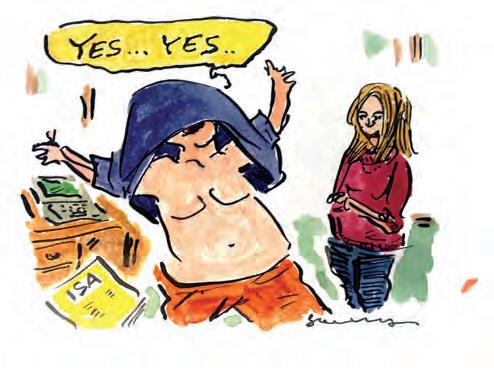
“Darling, are you going to celebrate like that for every single 20p in the pound saved?”
| 07•2014 108 money
CA rtoon by S teve W A y
There Are some oTher ChAnges
To The isA rules This monTh:
n You can put the whole lot into a stocks-and-shares ISA or into a cash ISA, or a mixture of both.
n You can now move money from a stocks-and-shares ISA into a cash ISA as well as the other way round.
So where should you put your money, and should you do it all in one go or set up a standing order?
whAT To invesT in. The point of an ISA is that it should be part of your retirement fund. It’s supposed to be in addition to your pension. In other words, you should see it as a long-term investment that, ideally, you won’t touch until you retire.
With this in mind, you should look to invest in products that will give you a good, average return each year so that your money can beat (or at least keep up with) inflation.
If we assume inflation will be around 2%–2.5% each year, you should aim for something that gives you at least a 6%–7% return each year. Sadly, cash (savings accounts) tend to return much less than that. Stocks and shares, on the other hand, should bring in more like 5%–6%.
invesT in sToCKs And shAres?
If you see your ISAs as part of your retirement fund, your best bet is to put the money into stocks and shares, assuming you’re not planning to retire for at least five years.
What you actually invest in is the next question! Personally, I find that people who are new to equities (as stocks and shares are also called) would do best to invest in indextracking funds. These are run electronically and simply “track” one of the FTSE indices such as the FTSE100 or the FTSE All Share.
Various companies—including L&G, Scottish Widows, Fidelity and Virgin—offer tracker funds, and you can ask them to “wrap” them in an ISA as you invest.
whAT ABouT your CAsh isA?
If you’re planning on using your ISA for relatively short-term saving, it’s probably best to put your money into a cash ISA.
While the Bank of England base rate stays low (and it’s not likely to go up by very much for a while), you will continue to get poor rates on cash ISAs. However, it’s still worth shopping around for the best—or least worst—deal on a site such as moneyfacts.co.uk
mixing CAsh And shAres The fact that you can put your money into a mixture of cash and shares is helpful for anyone who has different things to save for (part-retirement, part-short-term).
It can also be a good way for people nearing retirement to “lifestyle” their investments. They can have some stability with the cash investments but still take advantage of potential gains in stocks and shares.
07•2014 | 109
Find Funding For A New Business
If you’d like to start your own business but the bank isn’t listening, there are some alternatives, even if you’re on benefits.
The Start Up Loans Company
This company offers loans of up to £25,000. To be eligible, you must have started your business but not been trading for more than 12 months.
Once approved, you’ll be assigned an experienced delivery partner who will help you build up a business plan and decide if you’ll receive funding. Visit startuploans.co.uk
New Enterprise Allowance
For those on benefits who want to start their own business, the government offers a loan to help with start-up costs and a weekly allowance of up to £1,246 paid over 26 weeks. The loan has to be paid back, but the allowance does not.
The minimum you can borrow under the New Enterprise Allowance is £500, but it can be up to £2,500 depending upon your eligibility.
The scheme doesn’t affect your housing benefit, tax credits, income tax or Access to Work grant. But
you’ll receive the allowance instead of Jobseeker’s Allowance. You must be 18 or over, have a business plan and be receiving either Jobseeker’s Allowance, Income Support as a lone parent, or Employment and Support Allowance.
Ask a Jobcentre Plus adviser to refer you to the scheme, or visit gov.uk

The Prince’s Trust Enterprise Programme
The Prince’s Trust provides loans of up to £4,000 with interest capped at 3%. It also offers training to help kick-start your business.
You must be aged between 18–30, unemployed or working fewer than 16 hours, with a strong business idea. If your application is successful you’ll be invited to an information session and go through several stages to develop your business idea before you can secure funding.
| 07•2014 110 money
I S to C K. C om/holy_mol y
Get Paid To Deliver
Now that the weather’s warmer, why not get paid for being out and about delivering leaflets and newspapers?
get the work
Check the job pages of your local papers, on gumtree.co.uk, craigslist.co.uk, and at your job centre. Contact local newspapers directly and hunt out demand for leafleters from smaller businesses in your local area.
make money
Delivering big catalogues will make you more money, but you’ll need a car. Distributing free papers can also pay well. For paper rounds, expect about £15 a week for around three or four hours of work.
things to look out for Avoid leafleting schemes where you’re paid on commission only, and remember that some leafleting schemes are scams. Google the company’s address to check credibility—just a PO box number isn’t a good sign.
top delivery tips If you manage to get two rounds in the same area at once, you can do all the delivering at the same time and be paid by two separate companies. If you choose a paper round, you can usually expect a bit more money if the paper also contains separate advertising leaflets.
one thing you must do this month
…is switch your gas and electricity. yes, really! even if you thought it was a waste of time in the past, it’s worth at least checking to see if you could actually save some money just by moving your provider. According to ofgem, a third of brits are concerned about their energy bills, yet 43% don’t think of shopping around for a better deal. It’s a lot simpler to do now after recent reforms. Find out how to do it at ofgem’s new website goenergyshopping.co.uk
this month’s Bargain
Get an exclusive 15% off any retro Sweet product at Chewbz.com with the code rdChewBZ. Choose from a range of sweet hampers and gift boxes. ends July 31.
fasCinating faCt
over 14 million ISAs have been opened every year since 2007 and £443bn of household wealth is already held in ISAs (divided almost equally between cash ISAs and stock-and-share ISAs).

jargonBuster
rate of return: the gain or loss you make on an investment over a specified period. It’s expressed as a percentage increase over the cost of the initial investment. Gains on investments are considered to be any income received from the product plus any capital gains made.

07•2014 | 111 r eader’s d iges t
for more, go to readersdigest.Co.uk/money
Easy recipes you can cook in 30 minutes
Spicy Crab with Chilli Mayonnaise
if you’re preparing a buffet lunch for a group of friends, you’ll need plenty of tasty sides to accompany the main dishes—and the quicker they can be prepared, the better. This makes a simple and healthy alternative to pâté, and the crunchy kick provided by the chillis, peppers and onions is a nice contrast to the fresh crab meat.
SERVES 4
• 1 green chilli
• 1 small green pepper
• 1 small red onion
• 3 spring onions
• 4 dressed crabs in their shells, to yield 550g crab meat
• 85g ricotta cheese
• salt and black pepper
• 300ml French mayonnaise
• 1tsp dried chilli flakes
• 4 slices white bread
1. Preheat the grill to make the toast
2. Rinse, dry, deseed and finely slice the green chilli and the pepper. Halve, peel and thinly slice the red onion. Rinse, dry, trim and slice the spring onions, including some of the green parts, and put them all into a mixing bowl.
3. Take the crab meat from the shells and add it to the mixing bowl with the ricotta cheese, stirring until well combined. Season to taste with salt and pepper.
4. Stir the chilli flakes into the mayonnaise and season with salt and pepper if necessary. Place in a serving bowl and set aside.
5. Toast the bread, cut into quarters in triangles and arrange them on a serving platter. Pile the crab mixture in the centre and place the bowl of chilli mayonnaise on one side.
6. Let each person help themselves to the crab mixture, spreading it on the toast and topping with the chilli-flavoured mayonnaise.
food & drink | 07•2014 112
photographed by fabfoodpix
Turn the page for further tips and accompaniments

Boosting the Crab Recipe
Give the toast a twist

Rachel is a food writer and blogs at thefoodieat.org
Remember, bread goes twice as far when turned into melba toast. It’s also a cunning way of cutting calories.
Once you’ve toasted the bread as the recipe instructs, use a serrated knife to cut carefully through it horizontally. Then cut each square in half diagonally and toast again under the grill. You end up with half the thickness, but it’s still a great vehicle for the crab mayonnaise.
As for the best way to prepare a crab (which can be a fiddly business), go to fishonfriday.org.uk/how-toprepare-cooked-crab
Ideal wines for the dish
Errazuriz, Unoaked Chardonnay
Tesco: Unoaked Chardonnay
2012, £9.99
Casa Leona, Unoaked
Chardonnay
Marks and Spencer: Unoaked
Chardonnay 2013, £8.49
Yellowtail, Unoaked
Chardonnay
ocado: Unoaked
Chardonnay 2013, £7.75
Limestone Coast
Chardonnay Aldi: Unoaked
Chardonnay 2013, £5.99
Our regional hero…
Chamonix Unoaked
Chardonnay The
Wine reserve, kent: Unoaked Chardonnay
2013, £9.99


SoMe MighT be SUrpriSed by The ideA of ChArdonnAy WiTh CrAb. The reputation of this wine was tarnished when former prime minister John Major announced that he was an “ABC Man” (Anything But Chardonnay). Around the same time, Bridget Jones’s Diary hit the cinema screens, which didn’t do Chardonnay’s image any favours. “Dear diary, I’ve failed again,” Jones wrote. “I’ve poured an enormous glass of Chardonnay and I’m going to put my head in the oven.”
Chardonnays of the Nineties and Noughties were heady and oaky. Pair them with crab and they’d overwhelm the delicate meat. The big aromas weren’t to do with the grapes, though, but the way that the winemakers b y rA C
Food & d rink | 07•2014 114
hel S M i T h
But Chardonnay doesn’t have to be oaked. Indeed, those produced in northern Italy never traditionally come in contact with the wood. Now, though, the trend is spreading— particularly in the New World regions —and more “unoaked” varieties are creeping onto supermarket shelves. These Chardonnays are aged in stainless-steel barrels and are also known as “unwooded” or, among racier vitners, “naked”. The palate is crisper and cleaner, and it makes a beautiful accompaniment to briney, delicate, sweet crab.

There’s no need to stick with a slice of lemon. Hendricks is often served with some slivers of cucumber. Try orange rind, lime or sprigs of rosemary to pick out different gins’ characteristics. were ageing the grapes. They tinkered with them, using oak barrels to force new aromas—vanilla, caramel, spice —into the wine. When this technique works, the results are complex and stunning. Get it wrong, however, and the result is a caramelly, headacheinducing wine.




Top TipS for The perfeCT g&T
geT The ToniC righT
There’s no point splashing out on a delicious gin and then using a warm, flat, tasteless mixer. fever Tree was the pioneer of Britain’s premium tonic-water market, flavouring their indian Tonic Water with cinchona bark and bitter orange—no artificial sweeteners or flavourings. Thomas henry
Tonic Water is a german brand, named after the pharmacist who perfected the method of injecting carbon dioxide into water in 1773. Also look out for fentimans’ nordic Mist Tonic Water
iCe iS iMporTAnT
And the bigger the better! Little ice cubes have a big surface area, so they melt quickly and dilute a g&T. Cream Supplies sell a king Cube Tray for making extra-large ice cubes. or take inspiration from Basic Instinct and chip chunks straight from the block!
experiMenT WiTh gArniSh

r e A der’ S d ige S T 07•2014 | | 115 i ST o C k C om/gr ESE i
for M ore, go To re A der S dige ST Co.U k/food-drink


Mario Lanza
The Student Prince
Serenade • Golden Days
• Drink, Drink, Drink
• Summertime in Heidelberg • Student Life
• Just We Two • Deep in My Heart, Dear • Time on My Hands • A Little Love, a Little Kiss






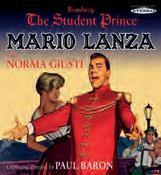
• If You Are But a Dream • Where or When
• A Kiss in the Dark… 22 tracks.
513137 CD £6.99
On the Air –Celebrating 90 years of Broadcasting
2 CDs
Compiled and released to celebrate the 90th anniversary of the Radio Times, this collection presents nine decades of BBC radio and TV broadcast recordings of best loved signature tunes, news items, comedy sketches, and the voices of notable personalities.

513240 2 CDs £11.99
The Everly Brothers –Greatest Hits
Wake Up Little Susie
• Bye-Bye Love • Claudette • Cathy’s Clown • Walk Right Back • Crying in the Rain

• Donna Donna • Lucille… 75 tracks.
513252 3 CDs £7.99
Full range of CDs available at shop.readersdigest.co.uk

Golden Operetta of Vienna
Fritz Wunderlich, Elisabeth Schwarzkopf, Hilda Gueden, Annaliese Rothenberger, Nicolai Gedda, Jussi Björling, Richard Tauber et al.
512905 CD £6.99

Jussi Björling –Pearl Fisher’s Duet
‘What remains so unique about the Björling voice? The bright metallic sound…powerful enough to cut through the heaviest orchestrations’
– James Murray
Includes arias from Bizet, Verdi, Gounod as well as the Puccini arias Tosca, La Boheme and Turandot. 512533 CD £6.99

Rodgers & Hammerstein at the Movies –The John Wilson Orchestra
Oklahoma! • People Will Say We’re in Love • Carousel Waltz • If I Loved You • You’ll Never Walk Alone • June is Busting Out all Over • Soliloquy • I’m Gonna Wash that Man Right Out of My Hair • Bali Ha’I • Some Enchanted Evening • The King and I. 513227 CD £11.99

Sho
The Original Rock ’n’ Roll Jukebox

8 CDs
Over 250 Top 20 hits including 100 No.1s from the Golden Age of rock ‘n’ roll, from Elvis to the Beatles. The Night Has a Thousand Eyes Bobby Vee
• Why Do Fools Fall in Love Frankie Lymon & the Teenagers • Diana Paul Anka • Poetry in Motion Johnny Tillotson
• Weekend Eddie Cochran • Hey! Baby Bruce Channel
• Hello Mary Lou Ricky Nelson • Runaround Sue Dion • Big Girls Don’t Cry
The Four Seasons… over 250 top twenty hits!
513694
8 CDs £21.99
The title says it all: a collection of the world’s most romantic melodies featuring wellknown pieces from Bach, Beethoven, Saint-Saëns, Verdi, Ibsen and Puccini. The Dutch violin virtuouso plays classic compositions including Cavalleria Rusticana: Intermezzo Sinfonico • Send in the Clowns • La Traviata: Overture • Carnival of the Animals: The Swan • Peer Gynt Suite No 1 • Greensleeves and the aria from Madame Butterfly among others. 380820 CD £7.99





ORDER NOW! 0844 332 8080 Open: 8am-8pm Mon-Fri and 9am-5pm Sat-Sun ORDER by Phone, Online or Post your order to: Reader’s Digest, FREEPOST RTHR-LLRY-ZHYS, Ringwood BH24 1HD Signature: Mr/Mrs/Ms: Initial(s): Surname: Address: Postcode: Email: ✃ Sho I enclose my cheque / PO for £............................. made payable to: Reader’s Digest Reader’s Digest may pass your details on to other associated companies. If you’d prefer NOT to receive information from 3rd parties tick the box. Tick here to receive our free catalogue PLEASE USE BLOCK LETTERS Card No. Start Date / Expiry Date / Issue No. Security No. CARD PAYMENT DETAILS Total P&P Grand Total FREE Code Title Qty Price RDP004 For our complete range of products visit shop.readersdigest.co.uk Quote RDP004 for your FREE delivery
André Rieu –Dreaming
QuoteDELIVERY!FREE RDP004
Digging and drying
QI know that my bedding hyacinths need to be dug up and dried over the summer to keep the bulbs in peak condition to replant in autumn, but what’s the best way to go about this?
A O nce foliage has died down, carefully lift the bulbs with a fork; insert it well away to avoid spearing the bulbs. Rub off as much soil as possible, then spread out the bulbs on trays or in shallow boxes lined with newspaper.

When they’re quite dry, with withered roots and papery skins, trim the roots and remove loose skin. Store the sound bulbs in paper bags or boxes in a cool, dry place. Discard any damaged, soft or discoloured bulbs, as well as small, young bulblets.
Q
I’ve heard some perennials need extra help in order to germinate. What should I do?
A Most perennials are suitable for sowing immediately, but certain varieties, as you say,
Keep hyacinth bulbs in good condition for replanting
will need special treatment. The seeds of baptisia and lupin, for example, have a hard coating that needs to be chipped carefully with a sharp knife, or rubbed with sandpaper to allow water to penetrate before any germination can take place.
Other perennials, such as certain varieties of campanula and primula, require a cold period, which is known as stratification. To stratify seeds, mix them with damp potting compost in a plastic bag and keep in the fridge for several weeks, then sow in autumn.
| 07•2014 118 Istock.com/JEND
home & diy
QI’m determined to grow better-quality roses in the future. I’ve been told that feeding them properly is the key, but I’m in the dark as to what this involves.
AWhile it’s not essential to feed roses to get a good display, they will be healthier and more resistant to disease if you do. Give all roses a summer dressing of highpotash or rose fertiliser, sprinkled evenly around the base of the plant. This is the second of two annual feeds (the first being in early spring) and should be given in the first half of this month; later feeding causes soft growth, which won’t ripen before autumn frosts.
QWhen we moved into our new home there was a lovely batch of Scotch broom in the garden, but it proved to be short-lived. Is there anything we could have done to preserve it?
A
As with a lot of things, pruning is the key—if broom is left unpruned, it soon becomes topheavy and dies off, as you discovered. Instead, pinch out the growing tips of young plants to keep them bushy and cut back the current year’s growth by half immediately after flowering to control the shrub’s size. Never prune into woody growth as this can kill the plant.
submit your gardening questions at readersdigest.co.uk/contact-us

Tie the stems of young climbling and rambler roses temporarily to supports. this prevents wind damage and keeps the plants tidy. they can be secured permanently in late summer or autumn. Prune wisteria as soon as possible, if this task wasn’t done earlier in the summer.
Protect exposed hydrangeas from hot, dry winds with a screen of net curtaining or a similar fine material, or they may suffer from scorching.
reAder’s TiP

sick of cats fouling the flower beds? save used tea bags, dry them, add a few drops of olbas oil to each one and place around the plants. cats hate the smell! many thanks to Rachelle Harding of cambridgeshire for sending this in.
send us your gardening tips—with photos, if possible. Go to readers digest.co.uk/contact-us. We’ll pay £50 if we use them on this page.
07•2014 | | 119 Istock.com/m E va N s
july checklisT
gadgets
By o LLy mann

Olly is a technology expert, BBC5 Live presenter and Answer Me
This! podcaster
Quechua 2 seconds XL
iLLumin Fresh, £159.99
The oft-repeated gag about pop-up tents is they take two seconds to erect and an afternoon to pack away. So I was pleased this spacious, light (6.2kg), three-man tent took me 30 seconds to raise, but was back in the bag in under three minutes (merely a question of strapping together coloured cords in a specific sequence). This model includes LED lighting sewn into the seams, making your late-night arrival at an (inevitably) cold, wet campsite as painless as possible.

acer c720P touchscreen chromeBook, £279.99
If you’re seeking a second device just for browsing, email, cloudbased documents and streaming, the Chromebook is an attractive solution. This light, lithe lovely looks like it costs twice the price, boots up in seconds and boasts a responsive 11.6-inch touchscreen to use with the keyboard.


AND CHECK OUT...

shake n make ice cream maker, £15.99
Add salt, ice, milk, cream and sugar to this hand-held shaker, mix it for three minutes and presto—ice cream.
chicBuds Porta Party BLuetooth
sPeaker, £27.99
This floral-patterned, palm-sized speaker is aimed squarely at girls—looks good, sounds decent, fits in a handbag—but this boy likes it too.


| 07•2014 120 home & diy
F or more, go to readersdigest.co.uk/diy-home







And that’s just for starters…
In the coming months we’ll be adding many more products and services, so you can shop for what you want, when you want.
You can browse our full range of DVDs, CDs, books and accessories via our website: shop.readersdigest.co.uk
Please let us know if you wish to receive the Reader’s Digest Shop catalogue in the future and be kept informed of new products, services and exclusive o ers.
Call and register your details with us on 0844 332 8080 and we’ll add you to our mailing list.





Shopping made easy!
We’ve opened our doors for business with the very best in entertainment, bringing you a wide selection of DVDs, CDs and books.

To welcome our subscribers on board, we’re giving you an exclusive 10% o your first order (plus free postage). To claim your discount simply quote RDS001 and your unique customer number when placing your order online or by phone.
Take a look inside your mailing pack for our 16-page books o er which includes a number of carefully selected titles we are certain will appeal to you.

shop.readersdigest.co.uk
Exclusive Subscriber O˜ er 10% OFF! PLUSFREE P&P Sho
books
A climactic thriller from a master of the genre and the eventful return of a 1920s heroine
July fiction

James writes and presents the BBC Radio
4 literary quiz
The Write Stuff
Vagabond by Gerald Seymour (Hodder & Stoughton, £14.99; ebook, £14.99)
Gerald Seymour has been publishing exciting but essentially serious-minded books set in the world’s trouble spots since 1975, when Harry’s Game became both a best-seller and a hit TV series.
In Vagabond, he returns to Northern Ireland, where the peace process hasn’t been to everybody’s taste—which is why Danny Curnow, a British officer during the Troubles, is called out of retirement to track an arms deal in Eastern Europe by unreconstructed members of the IRA…

In many ways, Danny is an old-school troubled hero in an old-school novel, but in neither case is that meant remotely as a criticism. Effortlessly shifting between different points of view, Seymour gives all of his characters real depth—as well as an unmistakeable tug of sadness at how the world has changed. His sense of place is as powerful as ever—and he still refuses to simplify the moral dilemmas involved. None of this, though, is ever done at the expense of the tension, which builds in the classic way to a properly thrilling climax.
NAME THE AUTH o R
(Answer on p126)
Can you guess the writer from these clues (and, of course, the fewer you need the better)?
1. His first book, an academic text,
was A Middle English Vocabulary.
2. The first volume of his most famous work—regularly voted Britain’s favourite book—turns 60 this month.
3. He had three first names: John, Ronald, Reuel.
| 07•2014 122
y J AME s
lT o N
b
WA

The Woman in the Picture
by Katharine McMahon (Weidenfeld & Nicolson, £12.99; ebook, £6.99)
The latest from Katharine McMahon is a sequel to her 2009 best-seller
The Crimson Rooms —and, like its predecessor, certainly can’t be accused of lacking incident. The book’s heroine, in every sense, is Evelyn Clifford, whose career as one of London’s few female lawyers of the 1920s brings us a series of twisting courtroom dramas from every class of British society. Her love life is eventful too, what with the dashing Nicholas Thorne returning from South Africa just as she’s engaged her kindly boss. And all this (and much more) against the backdrop of the General Strike, whose own twists are neatly traced through the various members of her large cast.
At times, admittedly, the author appears almost too smitten with Evelyn, who responds to every crisis with unerring wisdom—and a level of feminist understanding that could belong more to our own times. Yet McMahon juggles her many plotlines with such skill—and takes them at such a lick—that the sheer verve of the story-telling wins through in the end. The result is a richly entertaining yarn, marred only slightly by a feeling that perhaps McMahon meant the book to be more than that.
PAPERbAcks
The Mill Girls by Tracy Johnson (Ebury, £6.99)
True-life stories from inside the Lancashire cotton mills.
Sycamore Row by John Grisham (Hodder, £7.99)
The legal thriller sequel, after 25 years, to Grisham’s first novel A Time to Kill.
Concretopia by John Grindrod (old street Publishing, £9.99)
Fascinating account of Britain’s post-war reconstruction schemes, with the high ideals given due prominence, as well as the obvious failures.
Spare Brides by Adele Parks (Headline, £7.99) The story of four women rebuilding their lives after the First World War—and all that it's done to their menfolk.
Peas and Queues by sandi Toksvig (Profile, £8.99)
Funny and thoughtful guide to “The Minefield of Modern Manners” from the TV and radio personality, from wedding guest lists to Facebook. Particularly interesting are how ideas of etiquette have changed through history.

07•2014 | 123 P H o T o By
DEEJ
RD’s REcoMMENDED READ
it seems the men in hi-vis may not have our interests at heart after all. But can overcautious rules be harmful?
Health & Safety Gone Mad!
According to the authors' introduction, afety was written out of a sense of anger. But while their book is obviously heartfelt, it’s never anything approaching a rant. Instead, they calmly dismantle many of the assumptions that now govern our lives.

For a start, quite a lot of safety rules turn out not to be rules at all. There’s also the fact that the words “in the interests of safety”—so cunningly designed to shut down all argument—are often false, because the real interests lie elsewhere. Take all those IT consultants who grew rich by “protecting” us from the “Y2K bug”, which would supposedly cause
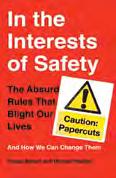
In the Interests of Safety: the Absurd Rules that Blight
Our Lives by Tracey Brown and Michael Hanlon is published by Sphere on July 3 at £12.99; ebook, £12.99
an apocalyptic computer meltdown as the new millennium dawned. (More money was spent on this than on the Apollo space programme.) But in countries too poor to afford the protection, no such meltdown happened—and the whole thing was later described by the Wall Street Journal as “the hoax of the century”.
Most mysterious of all are the rules for which there’s no scientific evidence. Why mobile phones were banned on plane flights, for example, remains a mystery.
Some people might argue there’s nothing harmful in erring on the side of overcaution. The authors, though, wouldn’t be among them.
E A s TC o TE signs. C om | 07•2014 124 B oo K s
For one thing, we’re forced to carry around the neurotic “worst-case” thinking. For another, our children are having much duller lives. For a third, it becomes impossible to know what really is dangerous. So which guidelines can we believe?
One justification for swaddling us in rules is that people appreciate “safety theatre”: the appearance that something is being done to keep us safe, even if it isn’t. But this, say the authors, has its dangers too. And to see what they might be, you need look no further than airports—as in this passage about the prohibition against toy guns on planes...
ok, even toy guns can look a bit like the real thing, and examining them might slow down security checks. However, Nerf guns—popular with eight-year-old boys—are made out of bright yellow, orange and blue plastic, and fire nothing more sinister than harmless foam-rubber “bullets”. Yet airlines still will not allow them on board.
In 2012, Patrick Cox’s son got a Nerf gun for his birthday during a visit to his uncle in Scotland. As the family passed through security at Edinburgh airport, they were stopped and asked to remove it from their hand luggage. Patrick’s son protested, ‘But it’s my birthday present,’ and his parents argued that it was clearly a toy. The security officer agreed that it was, indeed, clearly a toy. But it wasn’t
MoRE sTARTliNG FAcTs
FRoM IN THE INTERESTS OF SAFETY
in 2007, the snaps from 650 christmas crackers destined for British troops in Afghanistan had to be removed because of a ban on “carrying explosives in RAF aircraft”.
The risk-assessment form to be completed by workers before they undertake certain key tasks on an oil rig is one page long. A risk-assessment form that had to be completed recently by teachers in Kent before they could take pupils to a nearby beach ran to 30 pages.
A woman was recently stopped from reading her Kindle in the viewing gallery of a British swimming pool because staff feared she was using it to take photos (it had no camera, and there's no law against taking photos of children anyway).
A big factor in the muchtrumpeted rise in cybercrime is the fact that people are now encouraged to file their tax returns online. So, an offence that for centuries has been committed on paper (misfiling a return) is now part of the “cybercrime epidemic”.
07•2014 | 125 R EADER ’s Di GE s T
‘‘
allowed, she apologised, as she threw it into the bin. Rules are rules.
It's not only young Nerf gun fans who have suffered this kind of treatment. Buzz Lightyears and Star Wars models are regularly confiscated too. We contacted BAA, the body that owns and runs some of the UK’s largest airports, including Heathrow. In 2012, it was responsible for Edinburgh airport too. We asked how many Nerf guns had been confiscated and why they were banned. We were told they would ‘look into it’. Several weeks later, having heard nothing, we contacted them again. This time they said that they were ‘unable to comment on security matters’ and referred us to the Department for Transport, which, after some time, decided that it too could only confirm the advice on their website and insisted they wouldn’t be commenting further. That advice states that prohibited articles include: ‘Toy guns, replicas and imitation

firearms capable of being mistaken for real weapons.’
At St Louis airport, a cloth monkey was relieved of his two-inch piece of gun-shaped plastic
The security officer at Edinburgh airport made it clear to the Cox family that she didn’t believe the Nerf gun could be mistaken for a real gun, but she confiscated it all the same. It was probably the same story at St Louis airport, where sewing enthusiast Phyllis May’s cloth monkey in a cowboy costume was relieved of his two-inch piece of gun-shaped plastic; and at Gatwick Airport, where officials disarmed Ken Lloyd’s small model soldier; or at Bradford airport, where fiveyear-old Alfie Waine was forced to hand over his Teenage Mutant Ninja Turtles; and at the German airport where officials wouldn’t let a fouryear-old board his flight with a plastic light sabre.
These stories just keep coming. In early 2014, a child travelling through Heathrow Airport was carrying a doll of the Toy Story character Woody. The miniature cowboy was carrying an even more miniature gun. It was, you guessed it, confiscated…
AND THE NAME o F THE AUTH o R is… J R R Tolkien—and so that famous work was The Lord of the Rings.
This kind of confusion and arbitrariness is an inevitable consequence of security theatre, because no one is quite sure what they should be doing or indeed why they are doing it.
| 07•2014 126 B oo K s
’’

Best-selling author Tony Parsons began his career writing for the NME in 1976. His highly acclaimed books include the multi-million selling Man and Boy. His first crime novel Murder Bag is out now.
My Family and Other Animals
By Gerald durrell

This delightful book lit a fire under my imagination that’s never gone out. Aged ten, I was the same age as Durrell in the book and totally identified with him. I too spent a lot of my time roaming free in nature, but his impossibly exotic adventures in Corfu were those that a schoolboy in 1960s, rainy, home-counties England could only dream of. His story is told with such generosity and humanity. It taught me that books can be the greatest of art forms.
On the Road
By Jack kerouac
Like Durrell, Kerouac’s book encouraged me to travel. On the Road is a powerful and pure book about friendship—those friendships you have in your youth when nothing


else gets in the way. It’s wonderful to remind ourselves of a time when friends were more important than anything else. Kerouac is a timeless writer, appealing to generations of young adults and encouraging a sense of adventure with his lyrical prose and the poetry he sees in the bleak American hinterland. I thought the life of a writer very romantic.
The Godfather
By Mario Puzo
While writing The Murder Bag, I turned to The Godfather as the ultimate example of a thriller with heart.
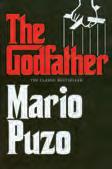
Books about family and relationships can lack excitement, while thrillers can lack emotional weight—but The Godfather gets it absolutely right. Puzo had never been to Sicily, where the novel is set, but his depiction of the place is testimony to the power of the writer’s imagination. As told to Caroline Hutton
07•2014 | 127
Photo by bill waters
TH aT c H anged my life for M ore, G o to readersdi G est.co.uk/ B ooks
Books
You Couldn’t Make It Up
Win £50 for your true, funny stories! Go to readersdigest. co.uk/contact-us or facebook.com/readersdigestuk
a few summers ago, someone in our local Freecycle Group advertised “a garden bench in need of lots of TLC”.
I applied for the bench and was advised to collect it any time from the back garden of the address, as the owners would be at work. It wouldn’t fit in my car, so my daughter and a friend returned with a Jeep and picked it up.
The bench sat in my garden for four days, after which I got an email from the original owners asking why I hadn’t collected it. Eventually, we worked out that we’d picked up a bench from the wrong address— and the owners had contacted the police to report the “robbery”.
I returned the incorrect bench, with apologies, and collected the correct one. It’s all restored now, and we still laugh about what happened!
margaret Hyslop, Dunblane
my two sons came in from playing outside and said they’d found a dead pigeon.
“I wasn’t sure it was dead,” said

“New system: guess how many jelly beans”
one, “But Daniel p****d near its head and it didn’t move.”
I was horrified: “What?!”
“I went over and said, ‘Psst,’ and it didn’t fly away,” his brother replied.
corrina williams, Denbighshire
at my local pub, a band were making tHeir debut. Despite their enthusiasm, the set wasn’t going down well—they were dying on stage and it looked like they’d be calling it a
| 07•2014 128 fun & games
Cartoon by M. na dler
day when they halted their set for a short break.
The lead singer nipped to the loo, and returned to a huge round of cheering and applause. Completely mystified at this sudden change in the audience, he turned to his bandmates and asked what had caused it. They pointed out that he’d left his headset microphone switched on during his toilet visit.
andrew berry, Lincoln
we were queuing at a country cafe. There was a bowl of apples on the counter, with a note saying, “Take just one—God is watching.”
My son noticed another bowl, this time with some lovely looking chocolate macaroons in it.
“I think I’ll take two, Mum”, he whispered to me, “because God is busy watching the apples.”
amelie george, Overton, Wales
wHile on a business trip in Jordan, I decided to get my hair cut in the hotel salon.
I stopped one of the staff and asked him where I could find the hairdressers. He looked at me blankly, so I said, “Hairdresser? You know, barber?”
His face lit up and he gestured me to follow him. After what seemed like a tour of the hotel, we ended up at the manager’s office.
The manager stood up from behind her desk and said, “Good
afternoon, sir, my name is Barbara. How can I help you?”
craig Horan, Southport
on arriving in maJorca during the early hours of the morning last year, my husband and I went to the hotel restaurant for some breakfast and were shown to a table. There were four seats and two full English breakfasts set out, so we sat down and tucked in happily.
Suddenly, we became aware of two gentlemen looming over us and staring. Little did we know that it was a self-service breakfast. These two had already been up, picked their breakfast and had gone back to get some coffee—only to return to discover my husband and I scoffing their food.
We were mortified!
verona russell, Swansea
one afternoon, we went for a walk in tHe park with my mum, my eight-year-old sister Asma and my four-year-old brother Mohammed. When we passed a person in a mobility aid, my younger brother pointed at the electric wheelchair and asked, “What’s that?”
“Mohammed! It’s rude to point!” my sister snapped.
We carried on and came across the person in the wheelchair again. “Look, Mummy!” my brother shouted excitedly, “There’s Rootupoint!”
samaaH fatHima, West Midlands
07•2014 | 129 r eader’s d iges t

Word Power
You can’t change the weather—but you can at least talk about it sensibly and intelligently. Here’s a flurry of useful terms you can try sprinkling into your everyday chitchat. Turn the page for a flood of answers.
By Emily Cox & H E nry r at H von
1. inclement (in-’kle-ment) adj—
A: comfortably warm. B: severe.
C: ever-changing.
2. temperate (‘tem-pret) adj—
A: marked by moderation. B: steamy.
C: frigid.
3. aridity (uh-’ri-de-tee) n—
A: harshness. B: blazing sunshine.
C: drought.
4. nimbus (‘nim-bus) n—
A: frostbite. B: rain cloud.
C: weather vane.
5. doldrums (‘dohl-drumz) n—
A: sounds of booming thunder. B: stagnation or listlessness.
C: weather map lines.
6. inundate (‘ih-nen-dayt) v—
A: overheat or melt. B: form icicles.
C: flood.
7. abate (uh-’bayt) v—
A: decrease in force, as rain. B: increase, as wind. C: pile up, as snow.
8. convection (kun-’vek-shen) n—
A: cyclonic movement. B: hot air rising. C: meeting of meteorologists.
9. striated (‘striy-ay-ted) adj—
A: jagged, as hail. B: banded, as clouds. C: patchy, as fog.
10. hoary (‘hor-ee) adj—
A: hazy. B: white with frost or age.
C: lightly sprinkling.
11. leeward (‘lee-werd) adj—
A: by the shore. B: out of balance.
C: not facing the wind.
12. graupel (‘grauw-pel) n—
A: snow pellets. B: mudslide.
C: warm-water current.
13. insolation (in-soh-’lay-shen) n—A: sunstroke. B: shade.
C: winter clothing.
14. permafrost (‘per-muhfrost) n—A: dusting of powdery snow. B: stalled front. C: frozen subsoil.
15. prognosticate (prog-’nahsti-kayt) v—A: forecast. B: chill.
C: take shelter.
Play Word Power online by going to readersdigest.co.uk/wordpower
07•2014 | 131
fun & gam E s
answers
1. inclement [B] severe. “Today’s kite festival has been cancelled due to inclement weather.”
2. temperate [A] marked by moderation. “After that cold snap, we could really do with some temperate conditions.”
3. aridity [C] drought. “If this aridity continues, I swear I’ll do my rain dance.”
4. nimbus [B] rain cloud. “We took one glance at the looming nimbus and scattered for shelter.”
5. doldrums [B] stagnation or listlessness. “The everyday use of doldrums refers to the area around the equator where prevailing winds are calm.”
6. inundate [C] flood. “After the storm, our tiny shop was inundated with water and debris.”
7. abate [A] decrease in force, as rain. “ ‘I do believe,’ declared Noah, ‘that the downpour is finally about to abate.’ ”
8. convection [B] hot air rising. “Sea breezes are a common weather effect of convection .”
9. striated [B] banded, as clouds. “You could almost climb the ladder suggested by those striated cirrus clouds.”
10. hoary [B] white with frost or age. “Professor Smith’s beard was almost as hoary as the windscreen he was scraping.”
11. leeward [C] not facing the wind. “We huddled on the leeward side of the island, out of the stiff breeze.”
12. graupel [A] snow pellets. “As I started shovelling snow off my path, graupel stung my cheeks.”
13. insolation [A] sunstroke.
“Insolation is a serious threat in the hotter regions.”
wEatHEr-wisE
14. permafrost [C] frozen subsoil. “Excavating the permafrost in Alaska often requires heavy equipment.”
meteorology is the study of weather—so what’s that meteor doing in there? Meteor comes from the Greek meta, meaning “over, beyond”, plus aoros, for “lifted”. And the suffix -ology means “branch of knowledge, science”. So meteorology is literally the science of what’s above us (ie, the weather).
15. prognosticate [A] forecast. “We might not like what they say, but nobody can prognosticate like British weather forecasters.”
voCaBulary ratings
9 & below:
Trending upward 10–12: Newsworthy 13–15: Headlining
Word Po W er | 07•2014 132
Catherine Tyldesley models the 2014 limited edition t-shirt from Jeans for Genes.
Buying this t-shirt will make a difference to children living with genetic disorders. Buy yours now for £20 and start changing lives.
FRIDAY 19 th SEPTEMBER 2014
jeansforgenes.org/shop

Jeans for Genes Day
What could your jeans do?
l @jeansforgenes f jeansforgenesuk
Jeans
Designed by Rachel Hill, Edinburgh College of Art
for Genes ® and ™ © 2014 Genetic Disorders UK. All rights reserved. Registered Charity Number: 1141583.
BrainTeasers
Challenge yourself by solving these puzzles and mind stretchers, then check your answers on page 137.
what’s next?
Solve the sequence to see if you’re visually minded.
Clowns
Can you spot the eight differences between these two pictures?


| 07•2014 134 fun & games
a B C D e

to Bee or not to Bee
Can you divide this picture by drawing two straight lines to produce four sections, each containing four bees facing in different directions?
Domino

What’s the value of the missing domino?
oDD numBer
Which is the odd number out?
2378, 4589, 1368, 3798, 4789
07•2014 | 135 Reade R ’s d iges t
mixeD-up CrossworD
Here’s a mixed-up crossword. Can you unravel the anagrams in the clues to find the solutions?
brain teasers | 07•2014 136 aCross 1 Mum’s eaten (9) 6 Truce (5) 7 Cared (4) 9 Neap (6) 10 Per ils (6) 12 Use urn (6) 14 Read (4) 17 Eel op (5) 18 Try us (5) 19 Trace Glen (9) nswersa :scrosa 1 musementa 6 Cruet 7 acedr 9 Pane 10 Pliers 12 Unsure 14 Dear 17 lopee 18 ustyr 19 ectangler :ownD 2 Mourn 3 ites 4 Marble 5 acren 6 Capture 8 Destroy 11 Priest 13 toves 15 asele 16 Grin Down 2 No rum (5) 3 Ties (4) 4 Ramble (6) 5 Crane (5) 6 Crate up (7) 8 Dry toes (7) 11 Ripest (6) 13 Votes (5) 15 Lease (5) 16 Ring (4) 1234 7 10 9 6 5 8 12 11 17 13 19 1514 16 18
BrainTeasers: Answers
what’s next?
C. The dot moves one corner clockwise at each stage, while the circle moves two places anticlockwise.

C to Bee or not to Bee

Domino
The value of the missing domino is 0-0. The total number of spots on every domino is the value of the total numbers of spots on the two dominoes immediately beneath it.
oDD numBer
3798. All the others have all their numbers in ascending order.
£50 prize question
answer published in the august issue
Each block is equal to the sum of the two numbers beneath it. Find all the missing numbers.
the first correct answer we pick on July 4 wins £50!* email excerpts@readersdigest.co.uk
answer to june’s prize question














ten cherries are needed to balance scale C.
anD the £50 goes to… samuel Pake from Guildford, surrey
Reade R ’s d iges t 07•2014 | 137
41 10 3 c
2216
AUTHORS
synopsis and sample chapters welcome, please send to:

CGC - 33 - 01, 25 Canada Square, Canary Wharf, London, E14 5LQ
0207 0388212
editors@austinmacauley.com
www.austinmacauley.com
All genres welcome
SHOPPING
B^R^BB^S
I^N LINDS^Y
They crucified the wrong manbut what about the one that got away?
‘I was there - I saw - and I remember.’
Jesus Barabbas
“I enjoyed this book more than any other fiction I have read in the past few years.”
“A very thought provoking readI would read his books again.”
“Vivid and fast moving - Jesus’ immediate circle described as human beings rather than saints.”
AVAILABLE IN BOOK OR E-BOOK





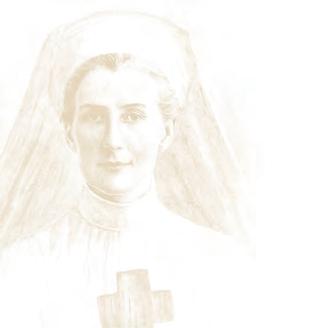


To advertise on these pages please contact Nick Page
138









Tel: 07789178802 Email: nick.page@madisonbell.com 139 DIRECTORY
Laugh!
Win £50 for every reader’s joke we publish! Go to readersdigest. co.uk/contact-us or facebook.com/readersdigestuk

“Are you really sure you want to put your dad in here?…”
a man is getting into the shower just as his wife is finishing up when the doorbell rings. After a few seconds of arguing over who should go and answer it, the wife gives up, quickly wraps herself up in a towel and runs downstairs.
When she opens the door, there stands Bob, their neighbour. Before she can utter a word, Bob says, “I’ll give you £800 if you drop that towel you have on.”
After thinking for a moment, the woman drops her towel and stands
| 07•2014 140 fun & games
cartoon by Steve Way
completely naked in front of Bob. After a few seconds, Bob hands her £800 and leaves.
Confused but excited about her good fortune, the woman wraps the towel round her again and goes back upstairs.
“Who was that?” her husband asks from the shower.
“Bob, the next-door neighbour,” she replies.
“Great,” says her husband. “Did he say anything to you about the £800 he owes me?”
genna Cooper, Nottingham
i just saw a woman with a “One Less Car!” sticker on her bike.
So I wound the window down and shouted out, “Fewer!”
Comedian Chris addison
an angry hotel Customer turns up at reception.
“I can’t stay in the room you’ve allocated me,” he fumes. “It smells to high heaven.”
“I’m sorry, sir,” the receptionst replies. “The last occupant had a skunk with him. But perhaps if you opened the windows...”
“What?” he interrupts. “And lose all my pigeons!”
Bridget Carroll, Bolton
Q: what’s green and when it gets stuck between your teeth, you die?
A: A tractor.
stephen hughes, Newport
Banksy ideas
Have you ever felt that the work of Bristolian graffiti guru Banksy is ever so slightly overrated? Then you’ll love @BanksyIdeas, which gleefully parodies the artist’s creative process.
stencil of david Cameron in a sinking row boat, yeah? but look again: the boat is nick clegg
stencil of the three kings each delivering a gift to baby Jesus. they’re holding a PS4, Xbox one & Wii U. next gen, yeah?
stencil of China’s moon rover, using a robotic arm to toss aside the flag america placed in 1969. new world superpower, yeah?
stencil of a girl in a red hood stabbing a wolf in the ribs. Little red riding Hoodie, yeah?
stencil of the Bat-signal, but rather than batman’s logo in the sky, it’s the McDonalds arches. Fatman, yeah?
stencil of leprechauns in a sweat shop, making Guinness hats for Saint Patrick’s Day.
stencil of the starbucks mermaid swimming in a river clogged with plastic bottles and cups. Well ironic, yeah?
r eader’s d iges t 07•2014 | 141
i rememBer the first time
I saw a universal remote control.
I thought to myself, Well, this changes everything.
seen on the internet
a photon walks into a hotel. “Can I help you with your bags?” asks the bellman.
“No, that’s all right,” replies the photon, “I’m travelling light.”
seen at 9gag.Com
a friend of mine told me he was going to a fancy-dress party as an Italian island.
I said to him, “Don’t be Sicily.”
Comedian tim vine
i onCe attended a Compulsory event. You really had to be there.
Comedian peter serafinowiCz
i got my Brother an elephant for his room. “Thanks,” he said.
“Don’t mention it,” I replied. seen on the internet
i want to dediCate tonight’s performanCe to my father, who was a roofer.
So, Dad, if you’re up there…
Comedian stewart franCis
in history this term, my class is learning about Galileo.
I already know that he was a poor boy, from a poor family.
Comedian milton jones

“Good news. Your cholesterol has stayed the same, but the research findings have changed”
looking BaCk, i really wish I’d bought my baked beans online.
Heinz site’s a wonderful thing.
seen at reddit.Com
there was onCe this floating head. Being very sad that he had no body, he floated into a bar. After ordering and receiving an alcoholic drink, he began to consume it. Slowly, after every sip, a body started to appear from the neck down.
Excitedly, he ordered more and more drinks and drank them, until he finally had a whole body. After leaving some money on the counter, he stumbled out into the street and got hit by a bus.
The moral of the story? Quit while you’re ahead.
seen at reddit.Com
L a UGH !
| 07•2014 142
cartoon by Sc HW a D ron
Website punoftheday.com collects together the finest puns and lets you vote for your favourite. Here are some that scored highly:
I’m glad I know sign language— it’s pretty handy.
The other day I held the door open for a clown. I thought it was a nice jester.
What’s the definition of a will? (It’s a dead giveaway.)
I did a theatrical performance about puns. Really, it was just a play on words.
Time flies like an arrow. Fruit flies like a banana. how very punny!
The shoemaker did not deny his apprentice anything he needed. He gave his awl.
If towels could tell jokes, they would probably have a dry sense of humour.
When the cannibal showed up late to the luncheon, they gave him the cold shoulder.
douBle take All is not what it seems at first glance in this selection of photos (as seen on the internet)


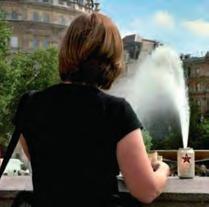


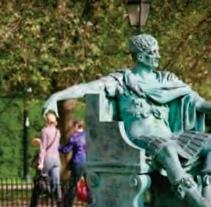

r eader’s d iges t 07•2014 | 143
for more, go to readersdigest.Co.uk/fun-games
Beat the Cartoonist!
W in £100 and a cartoon print

think of a witty caption for this picture and you could beat the experts at their own game. the three best suggestions will be posted on our website in mid-July alongside an anonymous caption from our cartoonist. Visitors can choose their favourite—if your entry gets the most votes, you’ll win £100 and a framed copy of the cartoon, with your caption added.
Submit to captions@readersdigest. co.uk or readersdigest.co.uk/caption by July 11. Vote online at readersdigest. co.uk/caption. We’ll announce the winner in our September issue.
The War-Dead Detectives
May’s Winner

this month’s competition was an absolute thriller, with all four captions duelling it out for the ultimate prize. in the end, a single vote decided it— reader Julie tift’s caption, “No, don’t do Gangnam Style—make up your own dance,” beat all the others into joint second place. So, despite the intensity of the struggle, the result is very familiar—another triumph for the non-professionals.
Scoreboard ReADeRS 22
CARtooniStS 7
in the AUGUS t i S SU e Plus
We meet the experts who help identify the missing from the First World War and piece together their stories.

• Rick Stein: “i Remember”
• 7 Mood Lifters
• Drama: Buried in Mud
• What Women Really need to Know About heart Attacks
| 07•2014 144
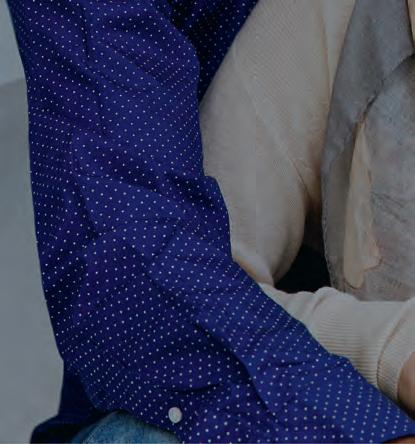
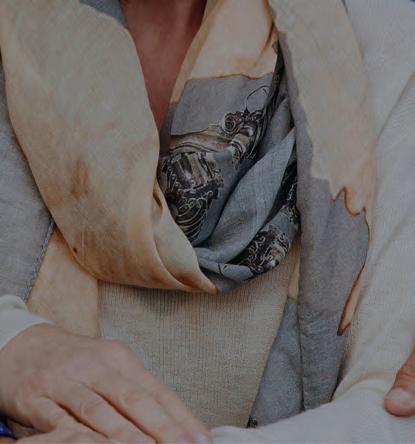













 Tom Browne
Tom Browne























































 As Norma Desmond in Sunset Boulevard
As Norma Desmond in Sunset Boulevard









































































































 Caring for Bo (middle) and their passion for cycling, brought Dave Berson (left) and Remco Jansen together
Caring for Bo (middle) and their passion for cycling, brought Dave Berson (left) and Remco Jansen together









































 Hurricane Sandy whipped up seas that swamped HMS Bounty. This Coast Guard photo of the submerged ship was shot the morning after
Hurricane Sandy whipped up seas that swamped HMS Bounty. This Coast Guard photo of the submerged ship was shot the morning after















































































































